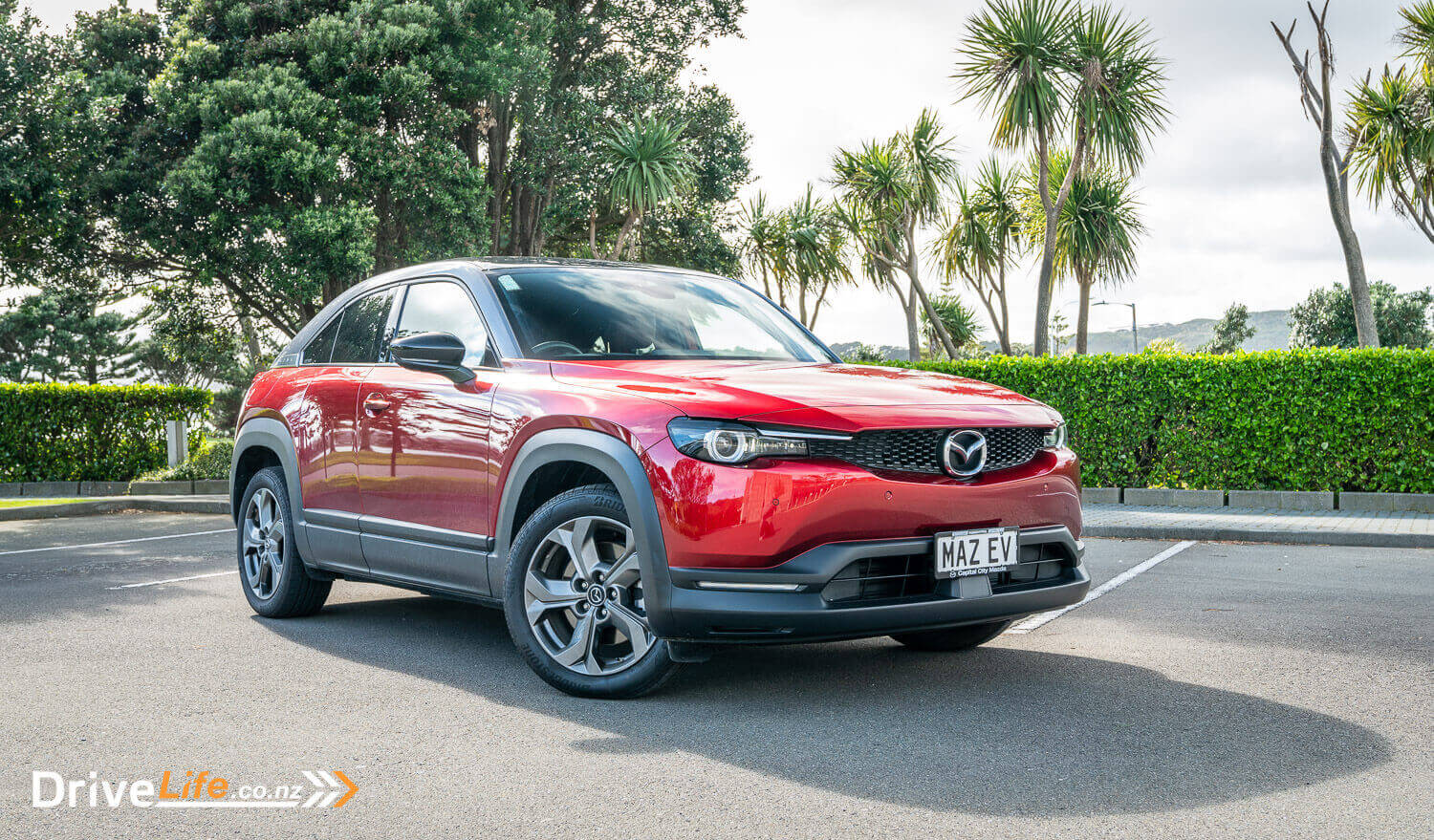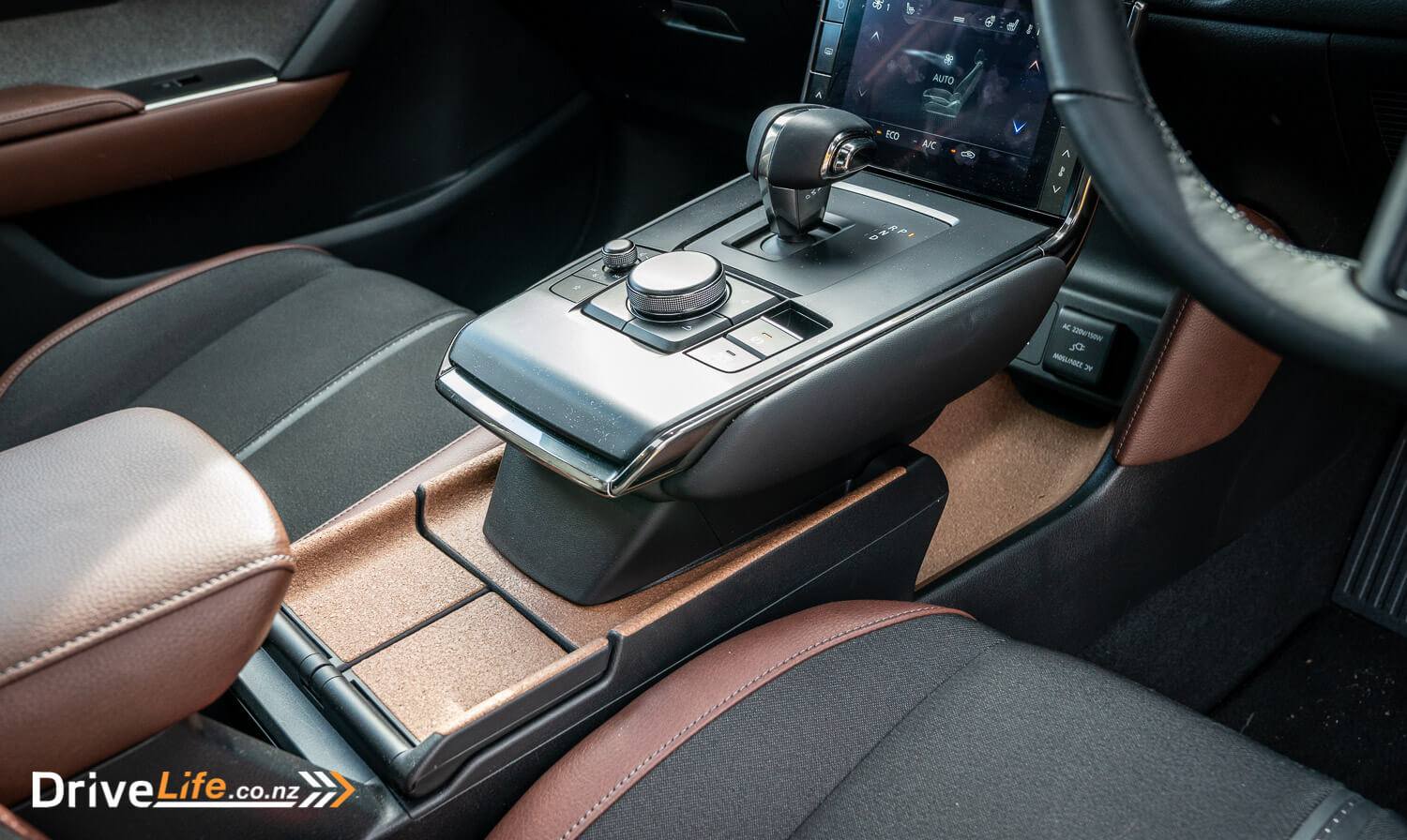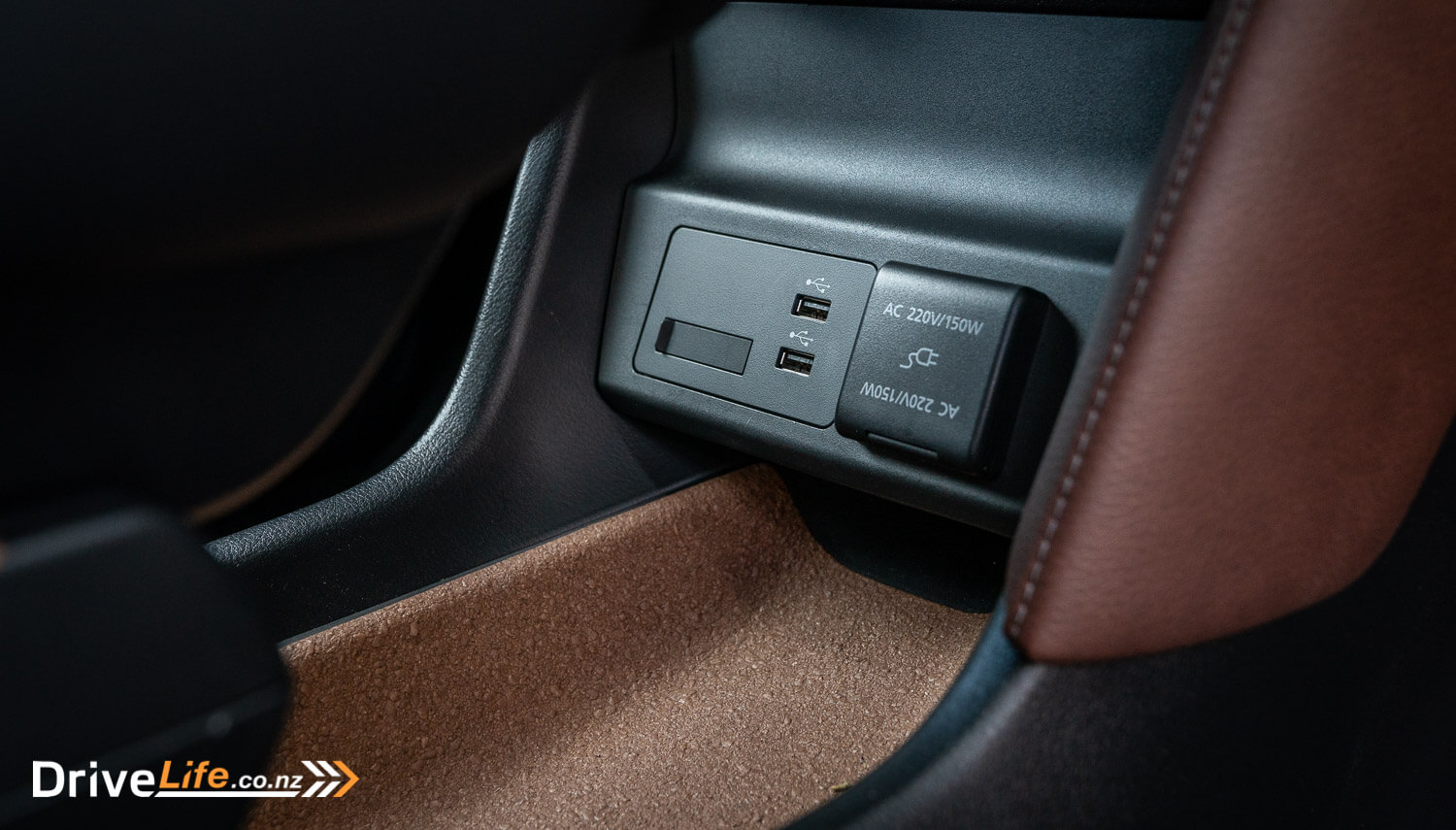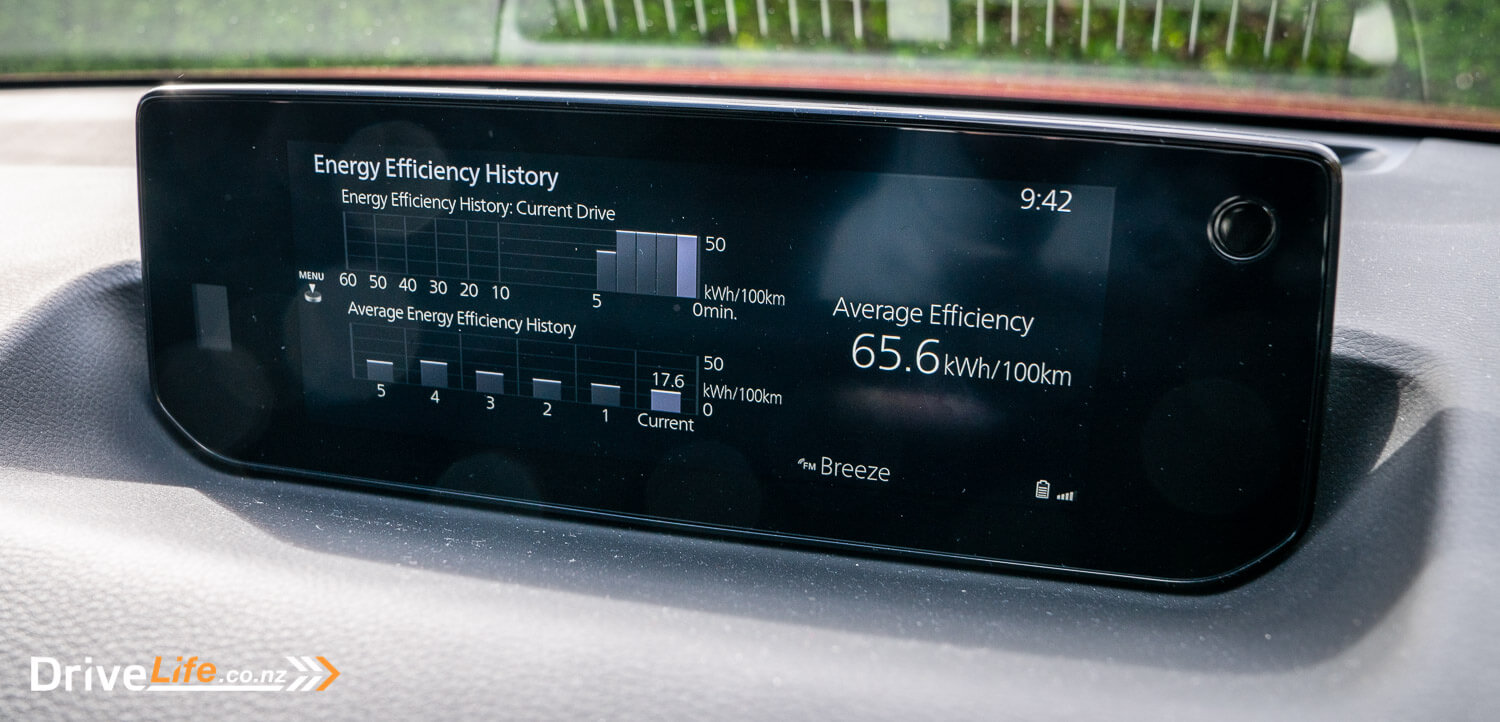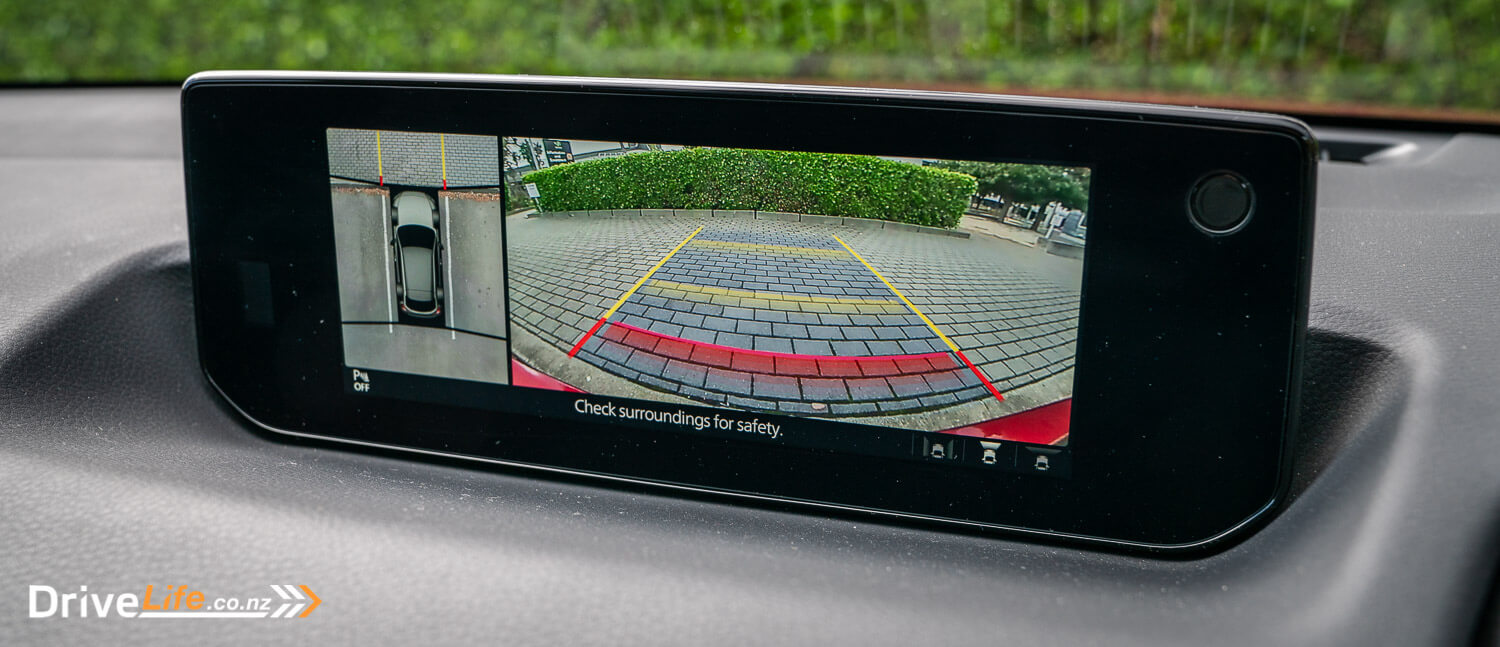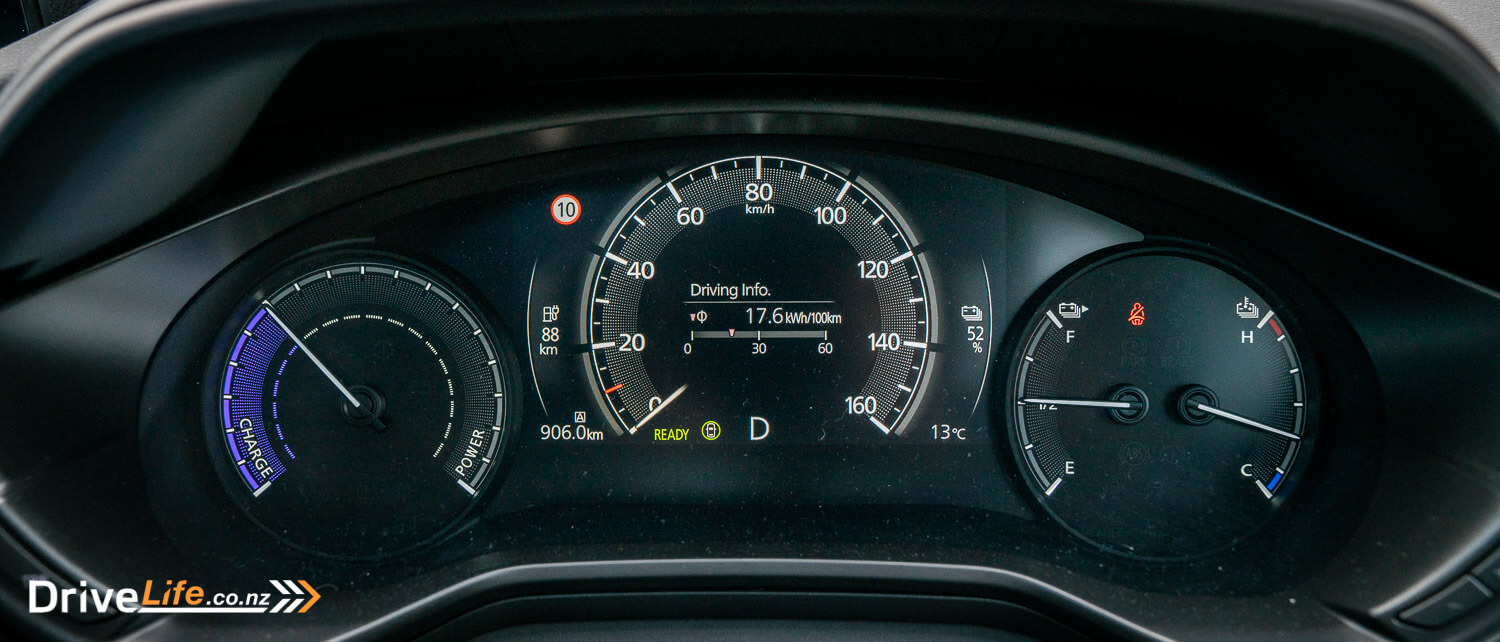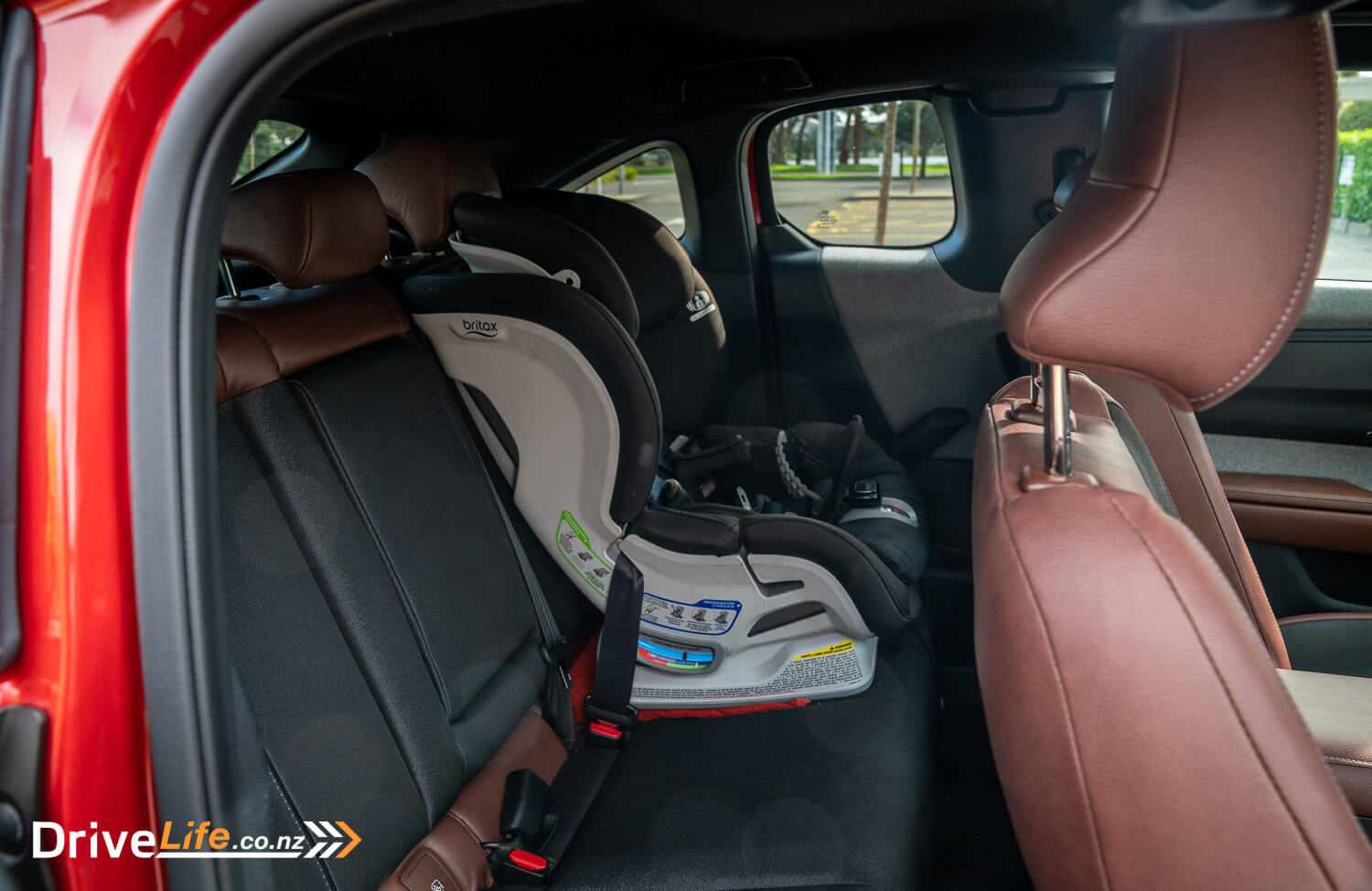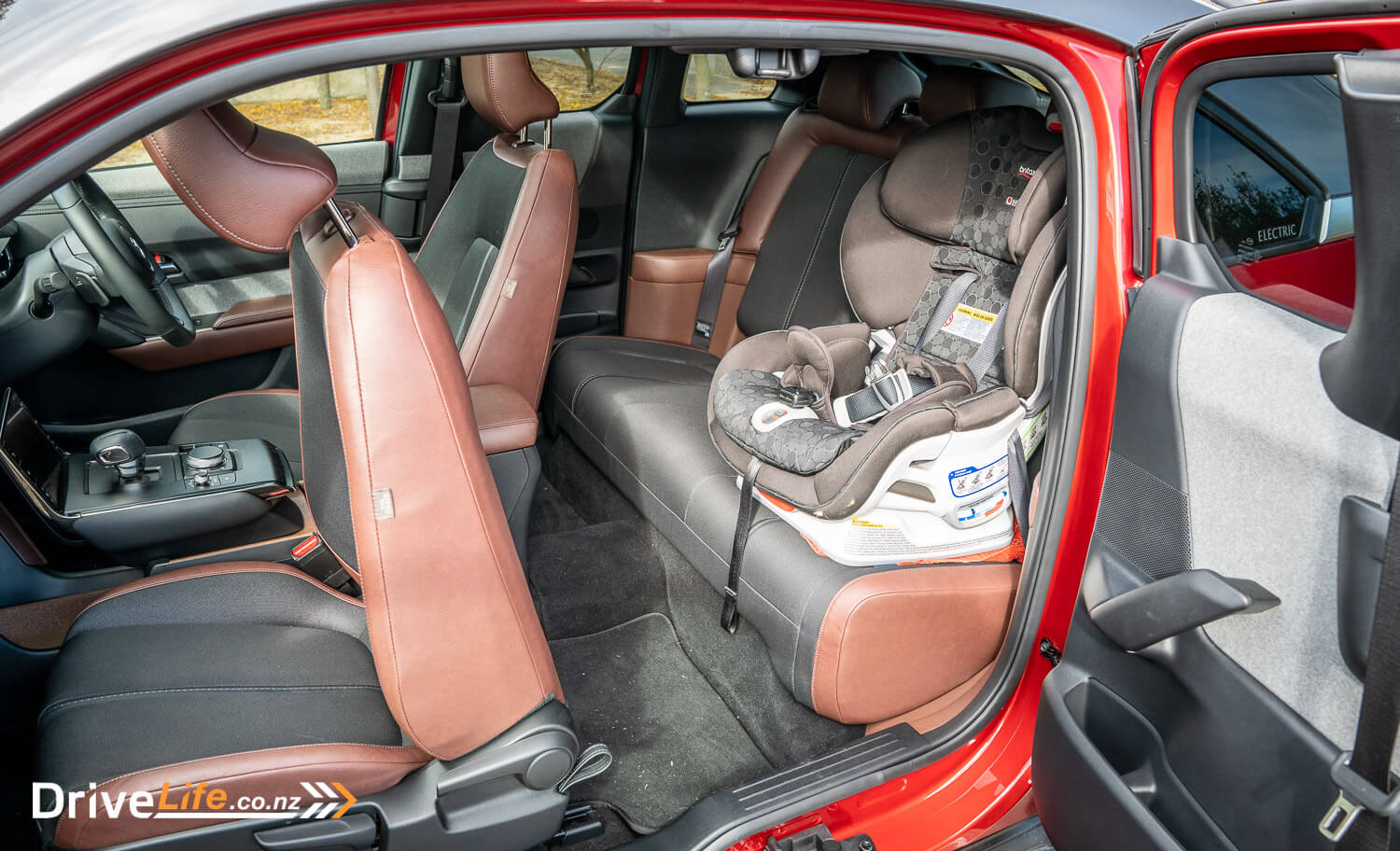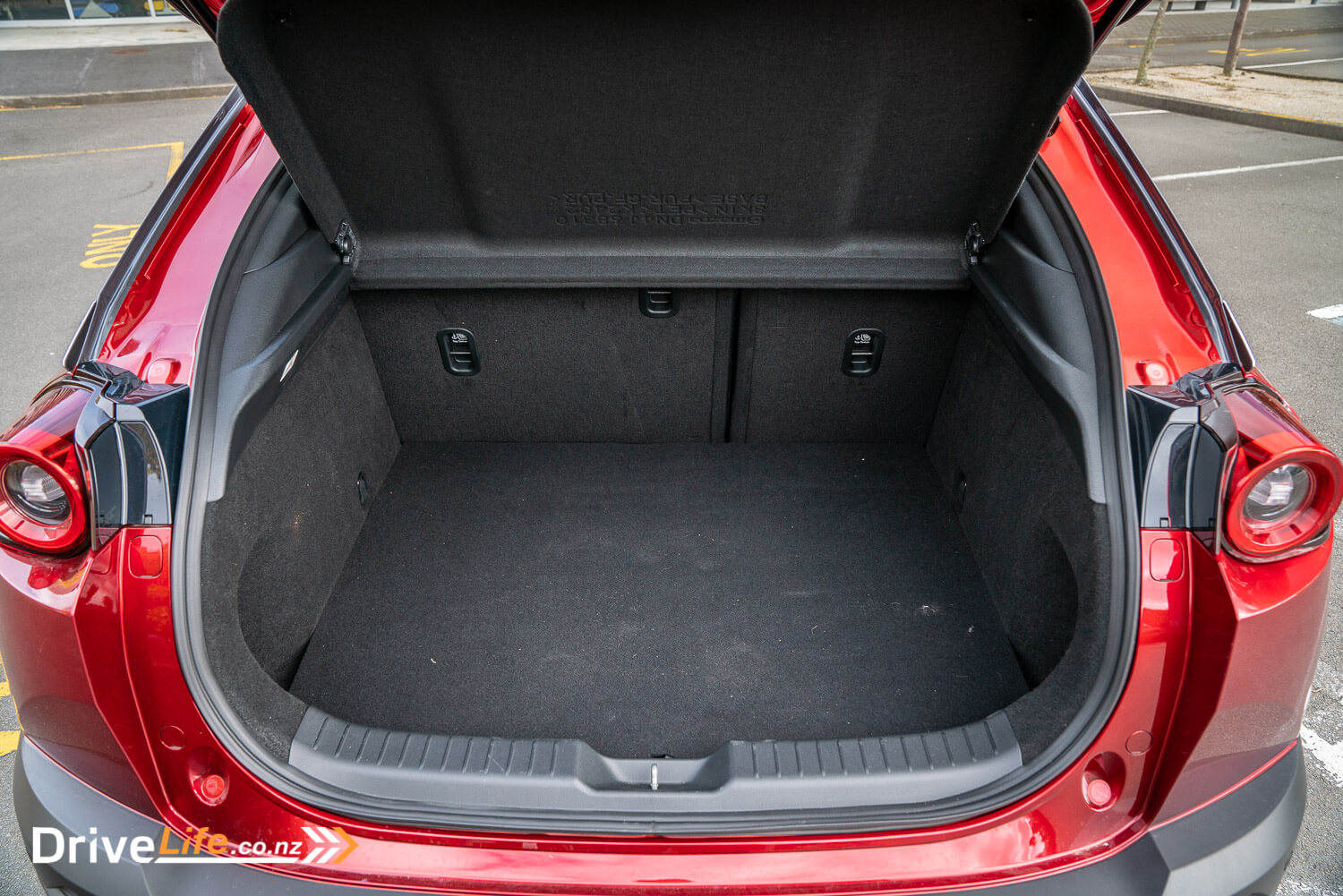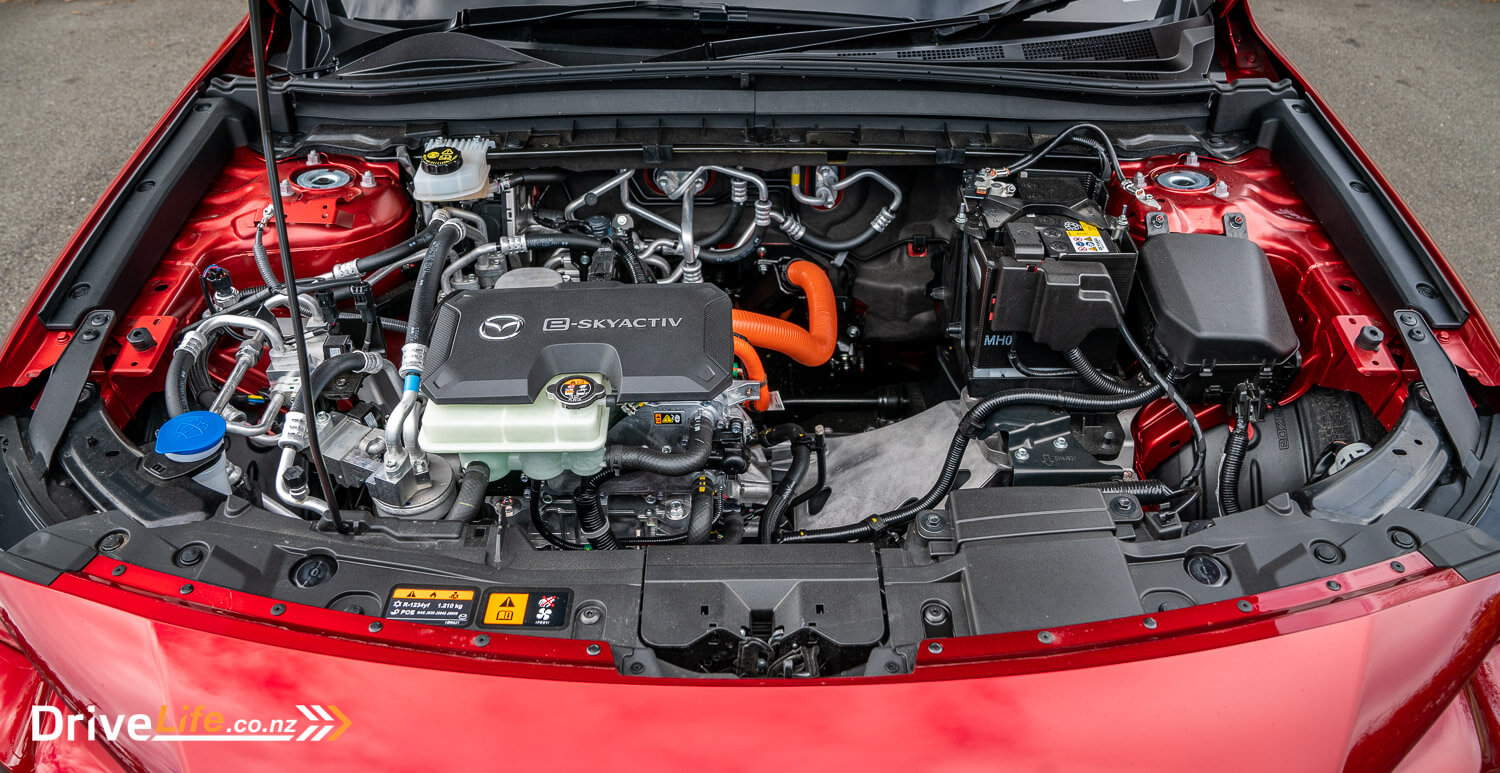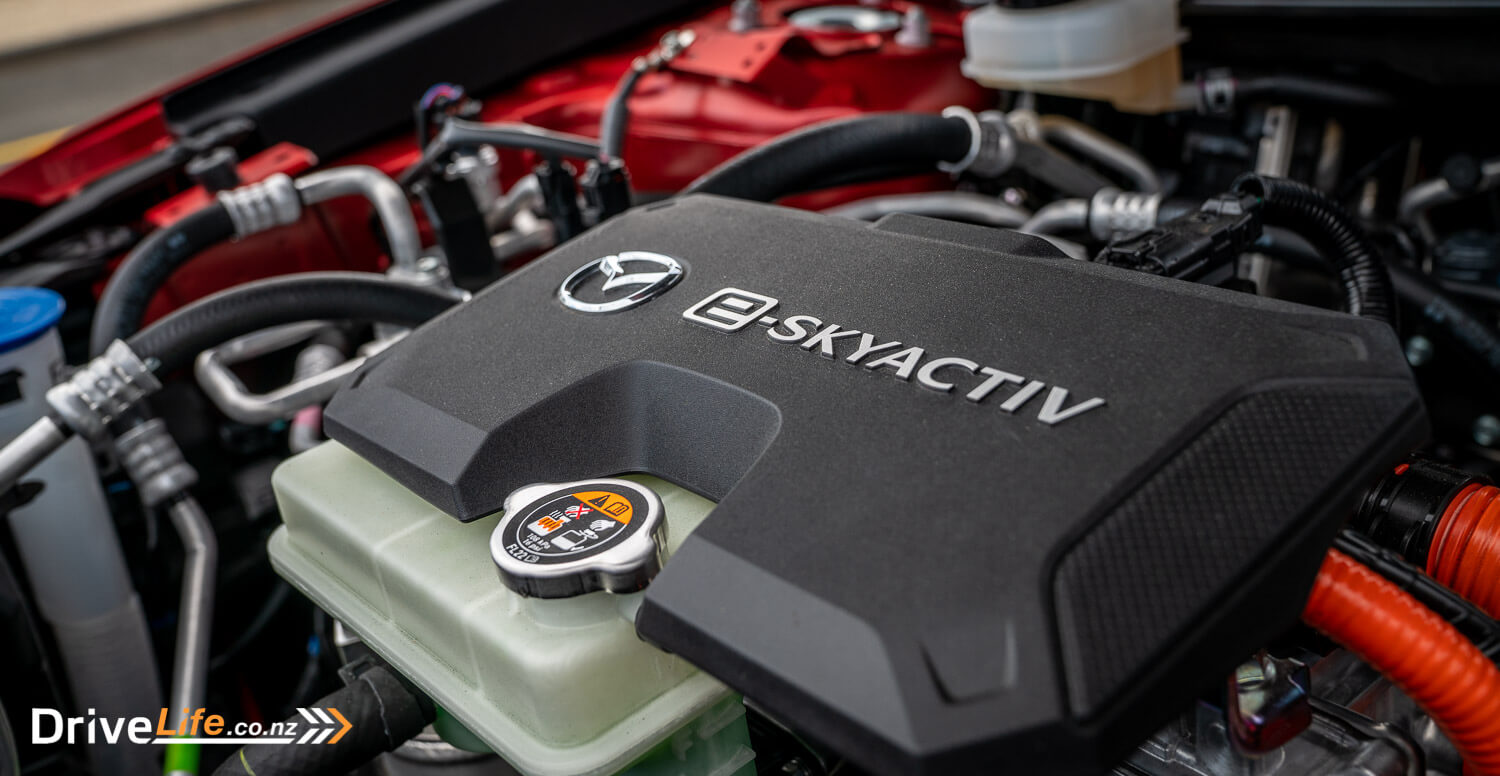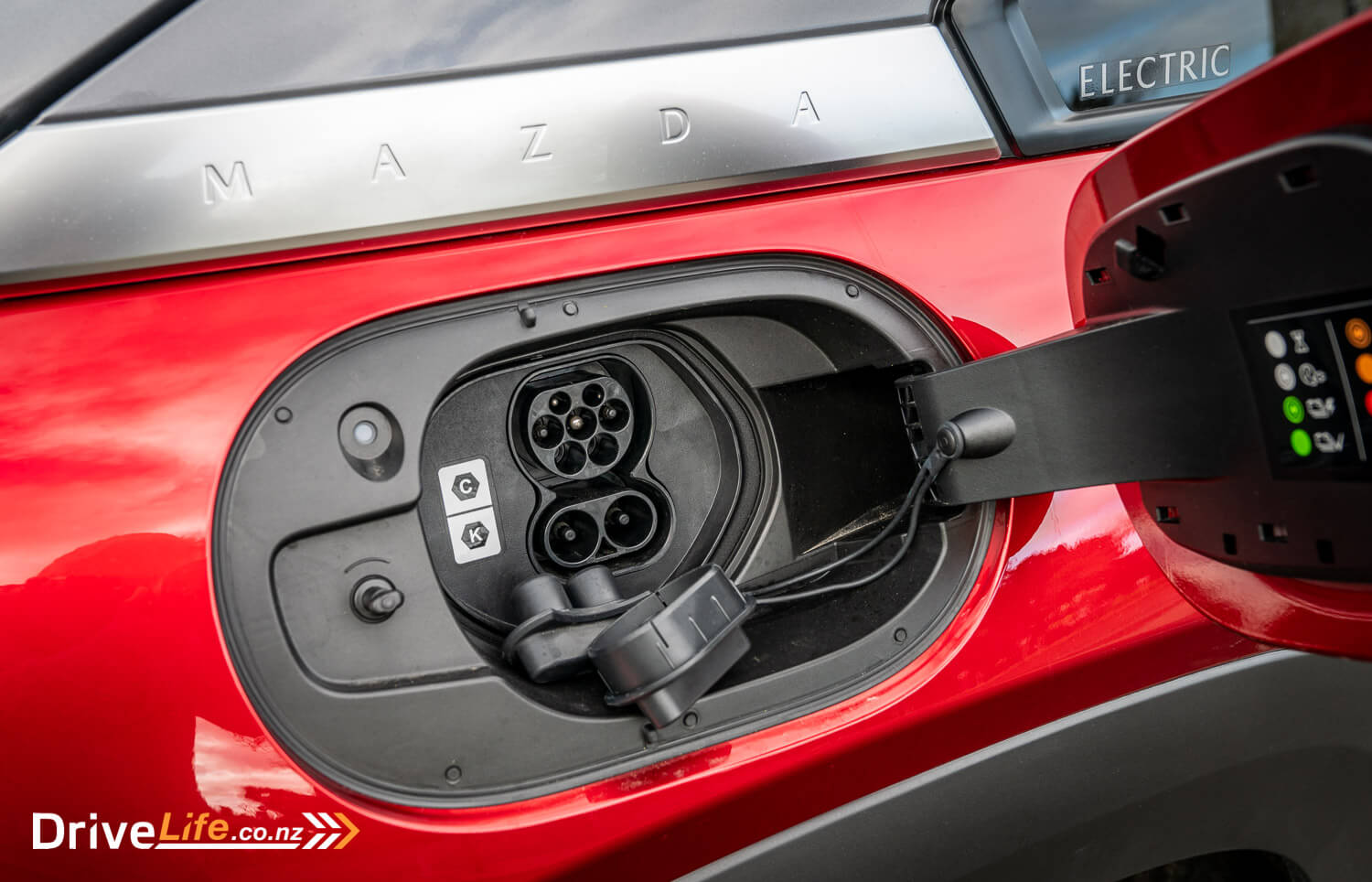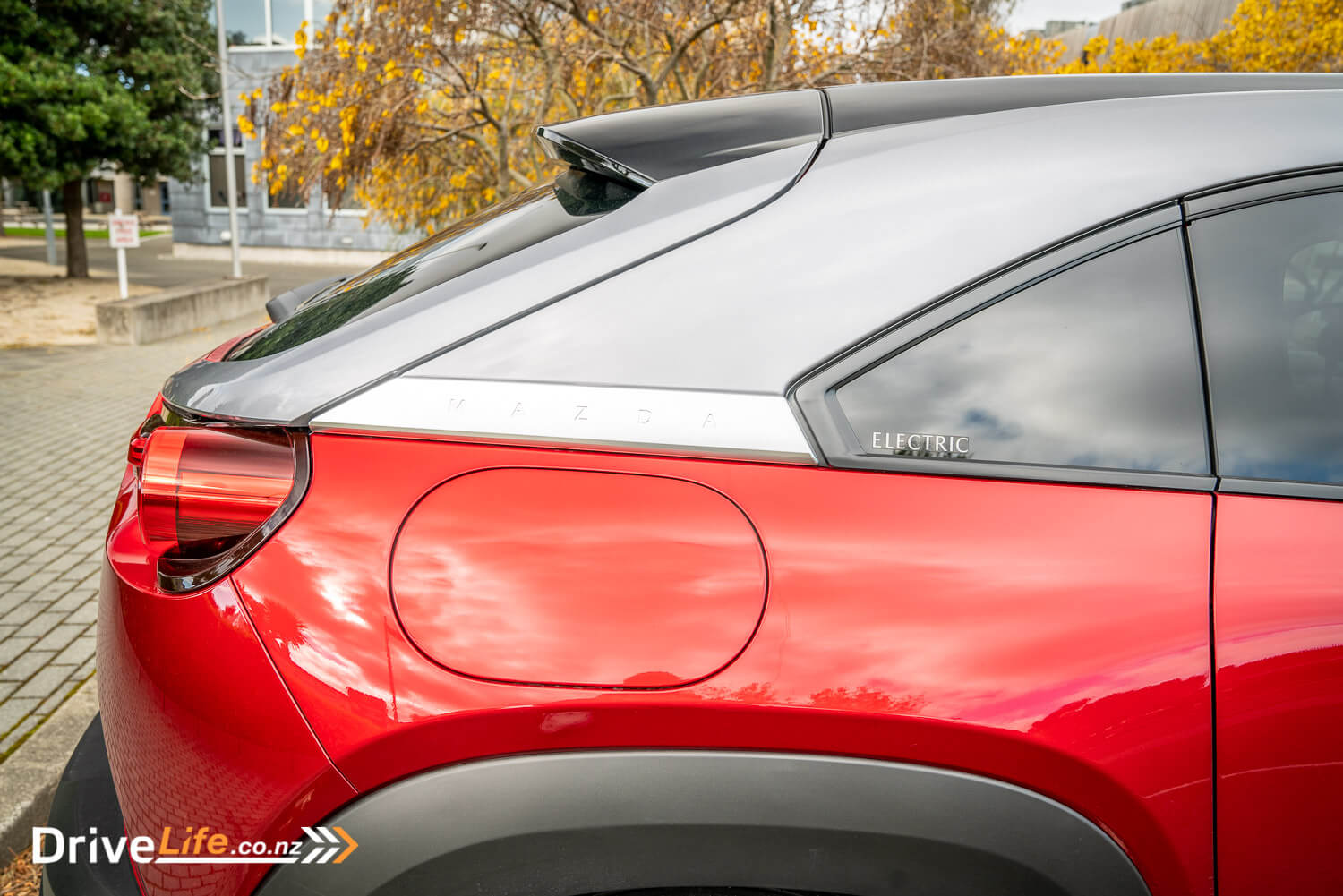Hot-off the heels of our long-term review of the Mazda CX-30, Mazda delivered us another one for the long-term garage. This time, we are going electric with the Mazda MX-30.
While Fred, our resident EV head, jumped with joy at this prospect, the rest of us petrol-sniffers were somewhat ambivalent.
Granted, all of us were unanimous in our thoughts when we first experienced the Mazda MX-30 at its launch event. We liked the design, we loved the way it drove, and appreciated Mazda’s strategy for the vehicle, which focused on smaller batteries, sustainable materials and “well-to-wheel” emissions.
However, since that launch, I have seen a few vocal sceptics voice their concerns about range, and being honest, I did empathise with them to a degree. Mazda believes that 199km WLTP of range is the goldilocks zone for everyday usability, while aiming to minimise the environmental impact of producing batteries.
So now that we’ve got the car for two months, all of us have a chance to test the theory. Has Mazda hit an EV sweet spot? Or have they misjudged the needs of New Zealanders?
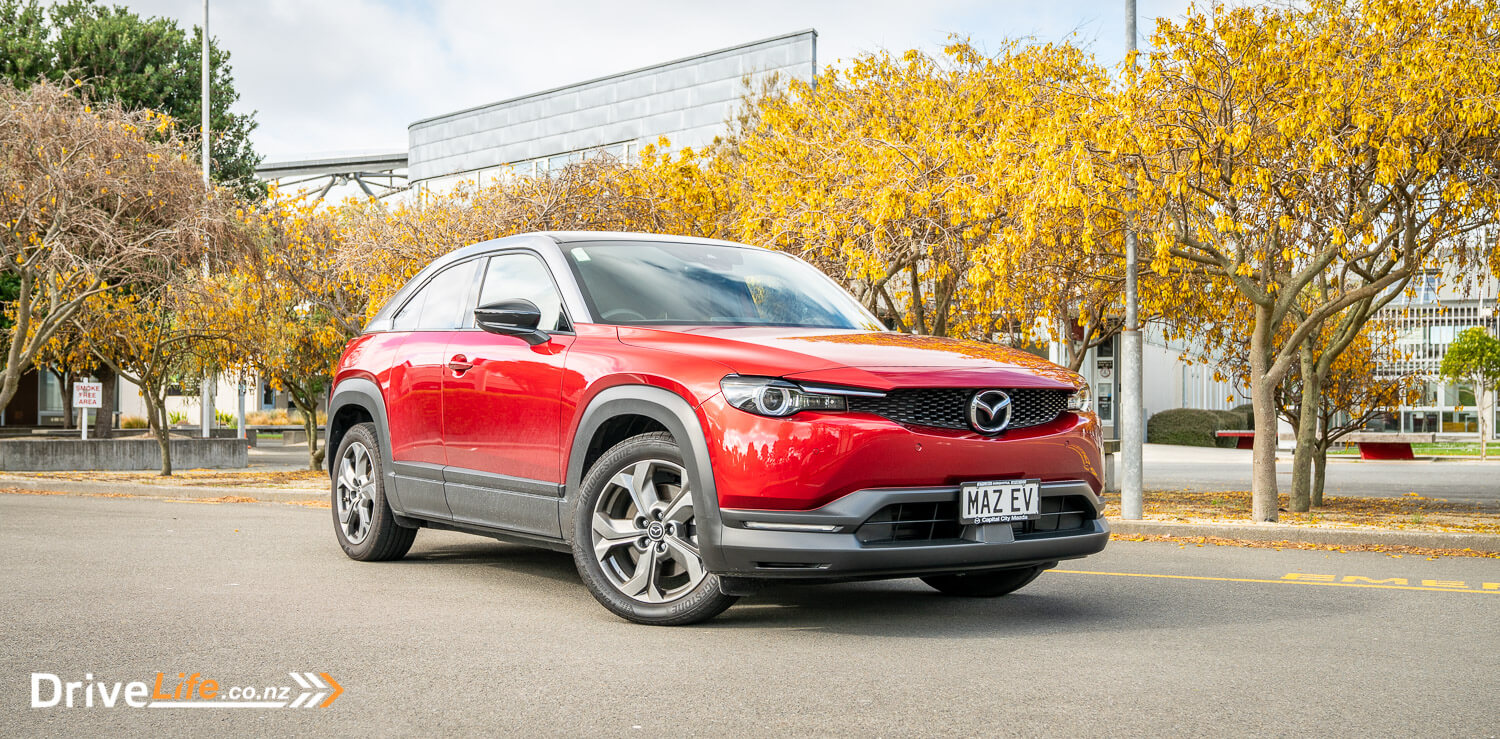
What We Like and Dislike About The 2021 Mazda MX-30
| Pros | Cons |
| Exterior styling Unique Interior Ride quality Handling Quiet by EV standards Mazda quality Cool doors! | Range Expensive Big B-pillar blindspot Tight in the back |
What’s In The 2021 Mazda MX-30 Range?
The MX-30 debuted in the New Zealand market as a fully-electric compact SUV, starting from $74,990*. Recently Mazda has introduced a second variant, which is a cheaper, ICE powered equivalent featuring a mild hybrid system. This MX-30 starts from $46,790.
However, MX-30 is widely known as Mazda’s first EV, so this will be the focus of this section.
The MX-30 EV is offered in one spec level, which is the Takami, a name often reserved for the highest trim levels offered on other Mazdas.
This means that the MX-30 Takami offers plenty of kit as standard, including:
- 18’’ alloys
- 8.8’’ infotainment with Sat-nav
- Apple Carplay and Android Auto
- 360 degree view monitor
- Reverse camera
- 12-speaker Bose surround with amp
- 7’’ touch-screen climate control panel
- Part digital instrument cluster
- Heads-up display
- Auto-dimming rear vision mirror
- Heated seats
- Heated steering wheel
- Memory driver’s seat with 10-way power adjustability
- Adaptive LED headlights
- LED taillights and DRLs
- Privacy glass
- Rain sensing wipers
- Proximity key and keyless-start
- Sun roof
There’s also the usual litany of safety features, including:
- Adaptive Cruise Control with stop/go
- Blind Spot Monitoring and assist
- Cruising & Traffic Support
- Driver Attention Alert
- Emergency Brake Assist
- Emergency Stop Signal
- Forward Obstruction Warning
- Hill Launch Assist
- Lane keep assist
- Lane Departure Warning
- Rear Cross Traffic Alert
- Smart Brake Support for rear
- Turn-across traffic and pedestrians and cyclists
- Traffic Sign Recognition
- Tyre Pressure Monitoring System
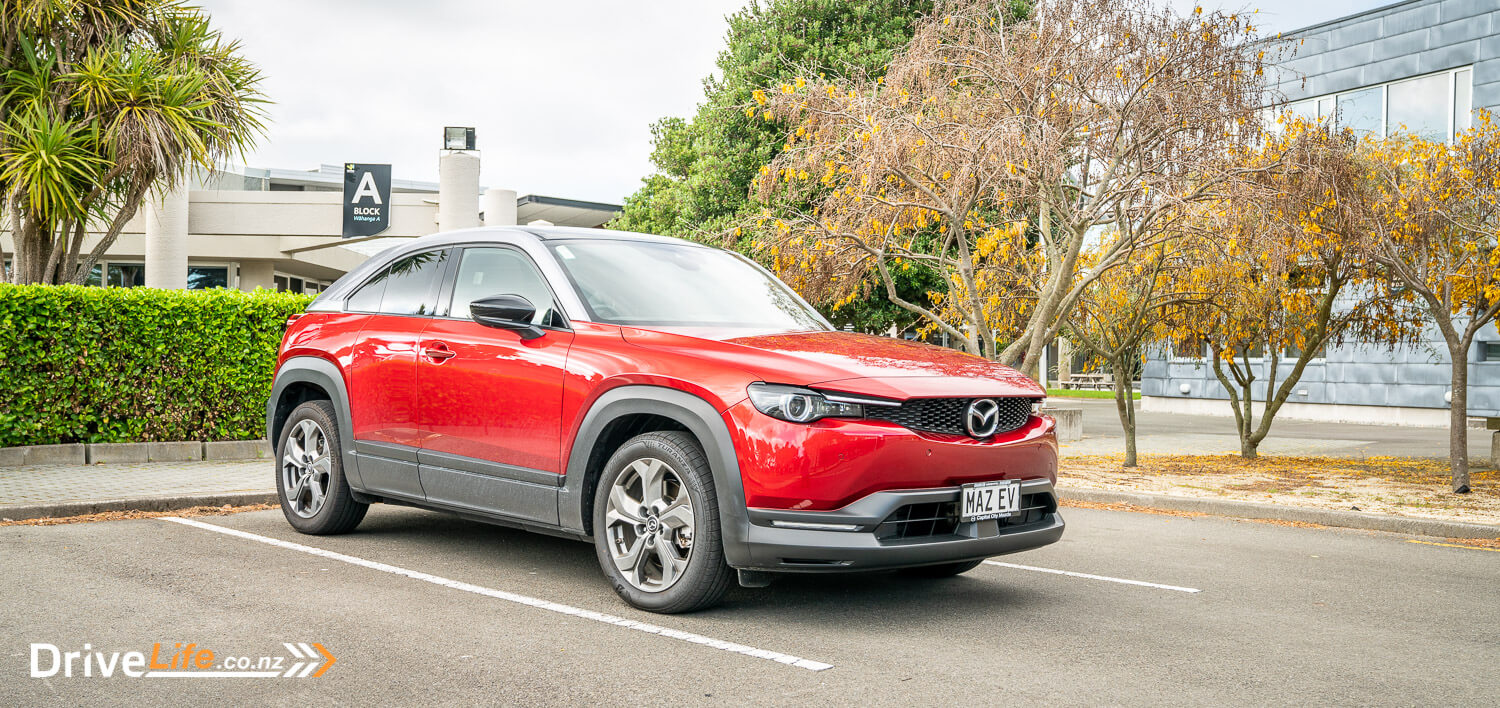
The MX-30 EV is powered by a front-driven, e-Skyactiv motor with a 35.5 kWh battery, producing 107kW of power and 271Nm of torque. Claimed range is 224kms and consumption is a claimed 18.5kWh/100kms. Fast charging at 50kW (DC) will ‘fill’ the battery in around 40 minutes, while slower 6.6kwh (AC) will take upwards of 5 hours.
Mazda will also throw in a Wallbox Pulsar Plus home charging system with each MX-30 sold, and they’ve promised to plant a few trees in your name too.
You can have your MX-30 in four different colour schemes. Of the four, two are single tone colour schemes and the other two are tri-tone colour schemes. The single tone colours are Polymetal Grey Metallic (blue-grey) and Jet-Black Mica. The tri-tone colours include Soul Red Crystal Metallic and Ceramic Metallic (white-grey).
For more information on the MX-30, check out the Mazda New Zealand website.
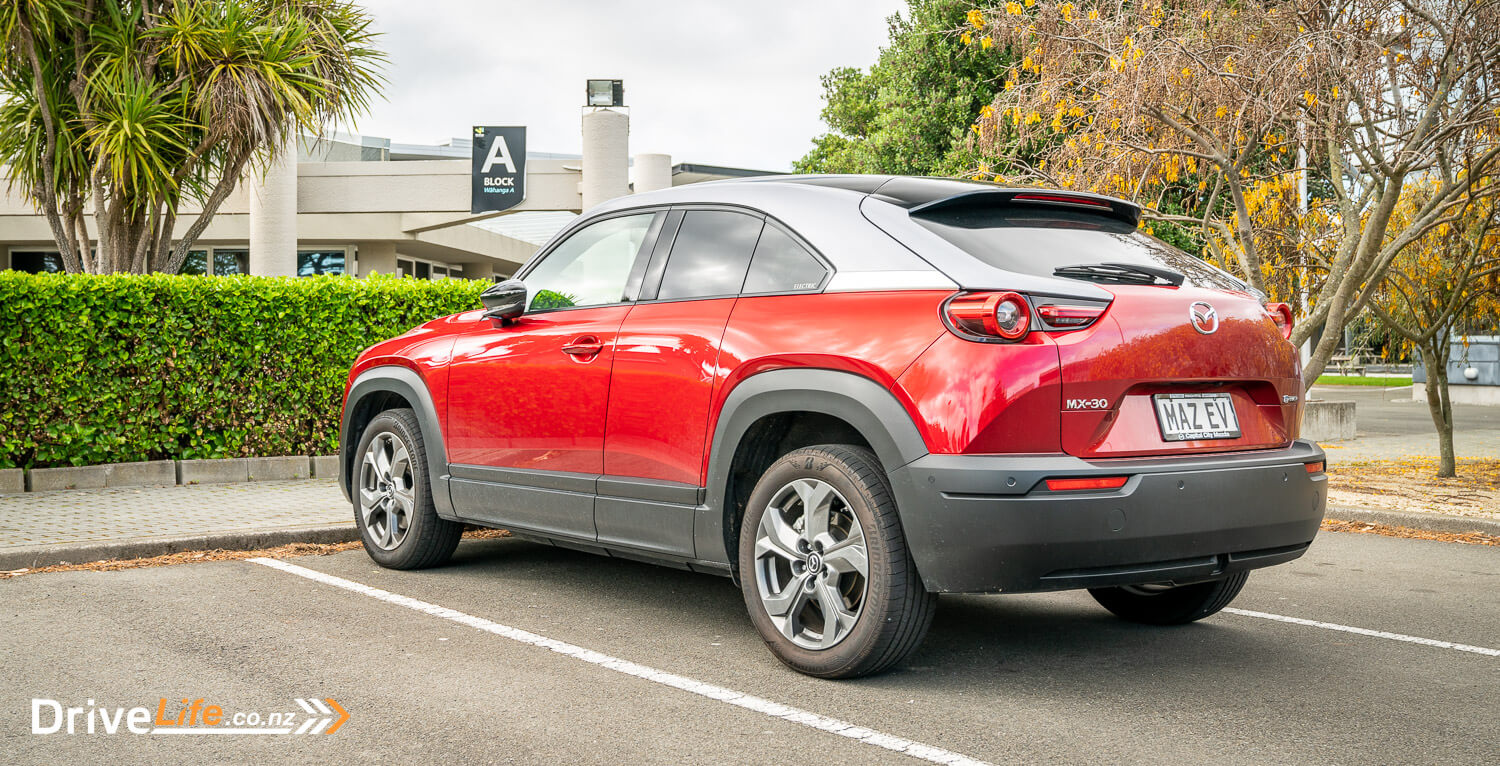
How Does The 2021 Mazda MX-30 Compare To Its Competition?
| Brand/Model | Power/Torque kW/Nm | Economy, kWh/100km (claimed) | Range | Seats | Boot Space, Litres | Price (pre-rebate) |
| Hyundai Kona EV 64kWh | 150/395 | 14.7 | 484 | 5 | 332 | $79,900 |
| BMW i3 i01 | 125/250 | 13.1 | 185 – 359 | 4 | 365 | $78,700 |
| Mazda MX-30 Takami | 107/271 | 18.5 | 199 | 5 | 341 | $74,990 |
| Kia Niro | 150/395 | 17.1 | 375 | 5 | 451 | $74,990 |
| VW Golf E | 100/290 | 16.8 | 190 | 5 | 341 | $69,490 |
| Renault Zoe | 100/245 | 16.5 | 315 | 5 | 338 | $68,990 |
| Tesla Model 3 Standard Range Plus | 239/420 | 14.9 | 448 | 5 | 542 | $66,900 |
| Hyundai Ioniq EV | 100/295 | 13.8 | 311 | 5 | 350 | $65,990 |
| Nissan Leaf | 110/320 | 270 | 5 | 435 | $61,990 | |
| Peugeot 208 EV | 101/260 | 348 | 5 | 311 | $59,990 | |
| MINI Cooper SE Electric | 135/270 | 15.6 | 233 | 5 | 211 | $59,990 |
| MG ZS EV | 105/353 | 18.6 | 262 | 5 | 359 | $48,990 |
First Impressions Of The 2021 Mazda MX-30
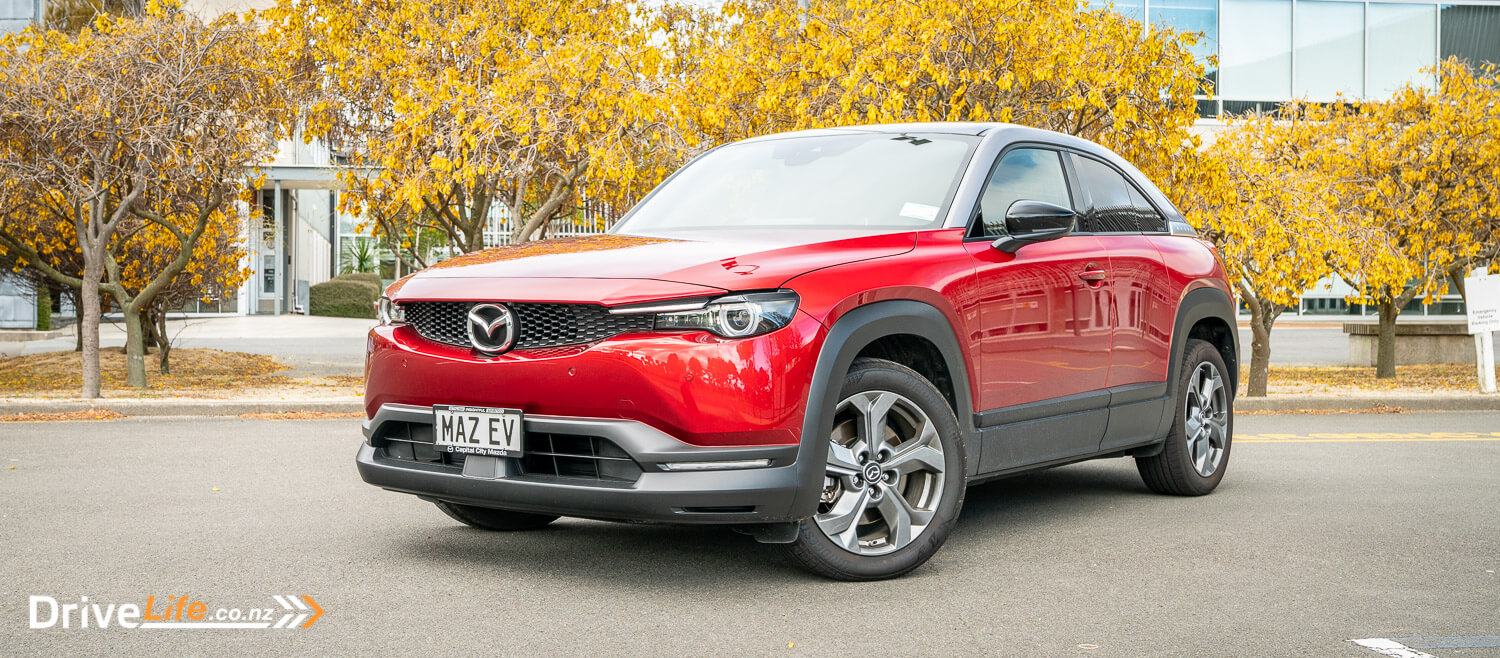
Unlike some EV manufacturers, Mazda knows better than to go all space-age whacky with their designs. The MX-30 has visible continuity with the rest of the range, a.k.a Mazda’s Kodo design language.
The MX-30 looks, and is, a premium product. The build quality is excellent, the interior uses premium, sustainably-sourced materials (more on this later), and the exterior features, such as the crisp LED lights and the stainless-steel plaque at the base of the C-pillar really makes the car stand-out.
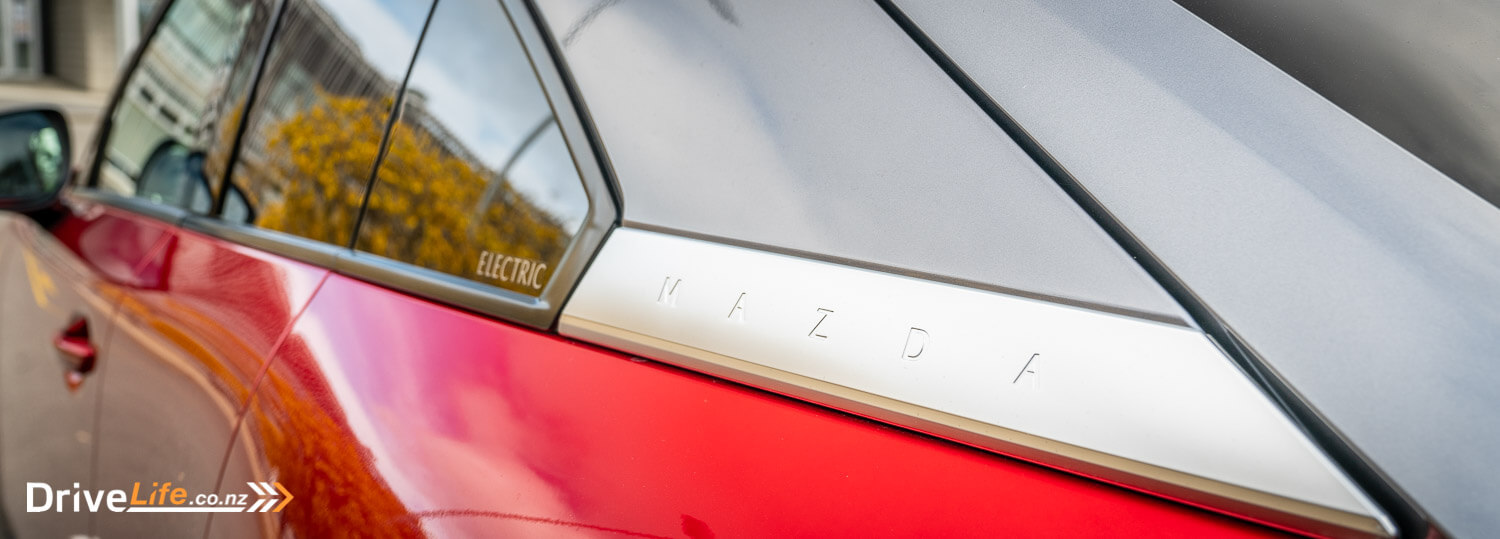
Of course, there are a couple of left-field decisions. The obvious one is the backward-hinged rear ‘suicide’ doors, which we first saw on the Mazda RX-8 which, ironically, had an insatiable thirst for petrol and oil.
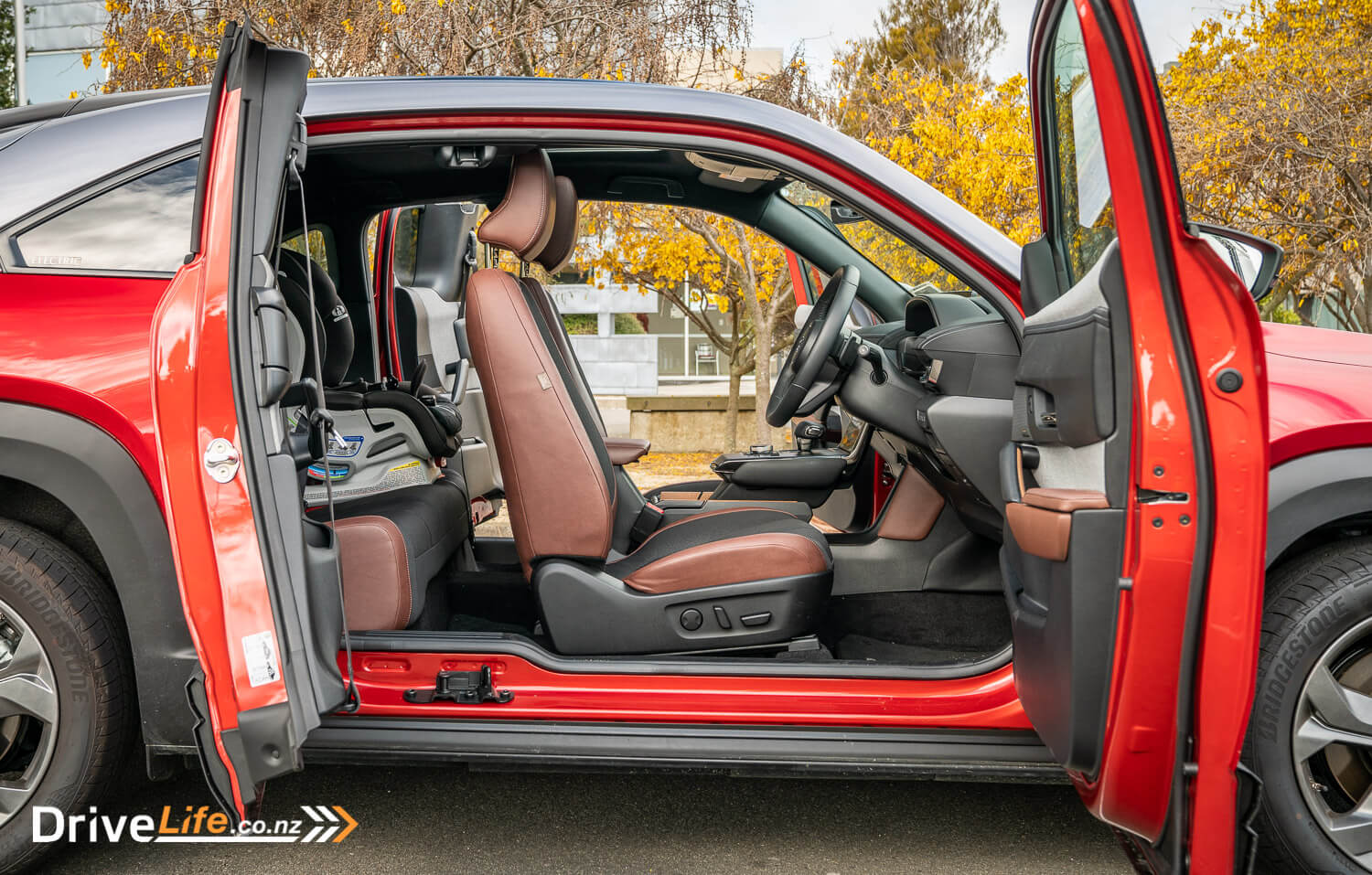
Another design feature of the MX-30, which is uncommon on other EVs, is the presence of the grille! It’s a functional one too, supporting the water-cooling for the battery. Many electric vehicles opt for a shield or ditch their grilles altogether, which makes them look nose-less.
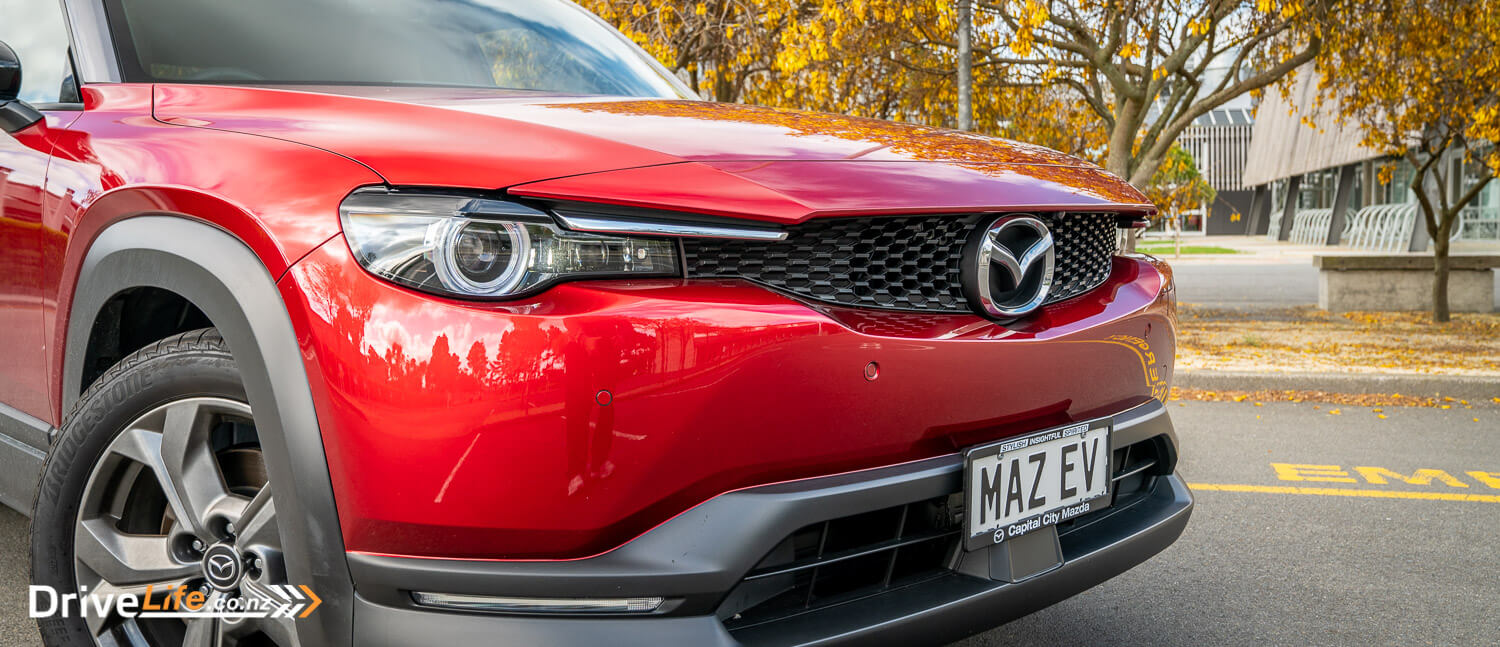
Overall, the MX-30 is a sharp looking SUV, without screaming in-your-face that it’s an EV.
Top job, Mazda.
What’s The Inside Of The 2021 Mazda MX-30 Like?
Much like exterior designs, Mazda is also in a hot spot with their interiors. The interior of the latest Mazda3 and CX-30 models are seriously high quality. In those cars, you’ll find contoured dashboards, ergonomic seats, abundant use of leather with two-tone patterns, and quality switchgear.
Hop inside one of those cars and you’ll begin to question some of the hatches being churned out by the prestige marques.
For the MX-30, Mazda has gone a different route. Inside, there’s no swooping lines or any smatterings of cow. Instead, the MX-30’s straight interior lines are considerably more restrained, which is an oddly-safe choice for the car pushing their EV proof of concept.
It’s not until you reach for the door and feel the cork inlays that you’ll realise where Mazda has been focusing their attention.
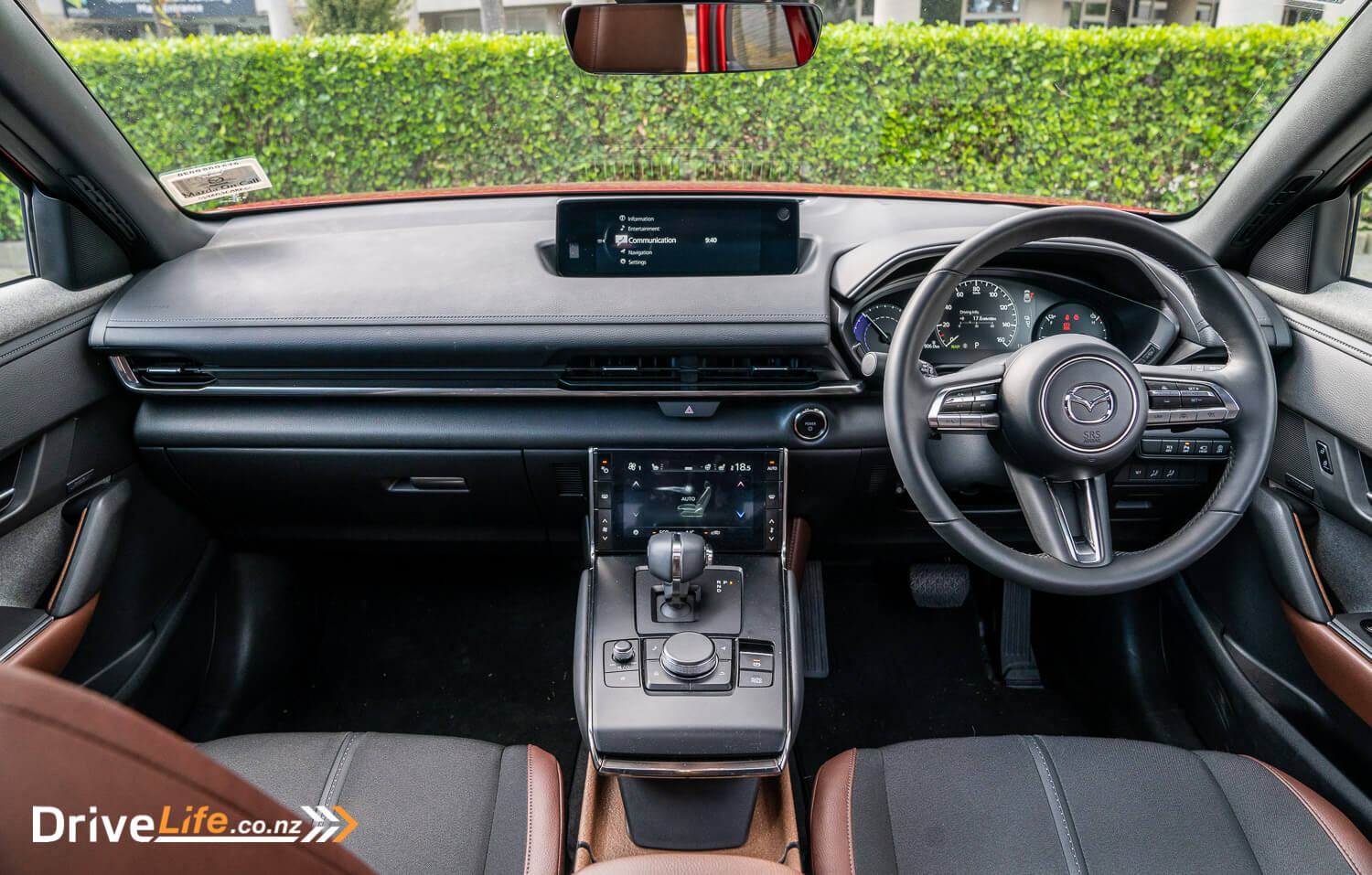
Materials are where the MX-30 differentiates itself from the rest, and it’s been a focus for the designers from the project’s get-go. It all ties into Mazda’s focus on ‘well-to-wheel’ emissions, which also explains the deliberately small battery choice (more on this later).
Manufacturing a vehicle creates emissions, and for an EV, there’s a greater emissions cost relative to an ICE vehicle from their production – for now, anyway. Focusing on ‘well-to-wheel’ means that Mazda attempts to reduce emissions in the production process, and one of those strategies is to use sustainable materials.
For example, the front seats are trimmed with a canvas and vegan leatherette combination. The door cards are lined with PET fabric, alternatively, a grey carpet type material, which are made from recycled plastic bottles. Then there’s the cork, lining the doors and the centre console.
Why cork? Not only is it a renewable and a plentiful resource, but it’s also a nod to Mazda’s company heritage. Mazda once produced cork products. Inside the MX-30, it lines the door handle inners, the centre console, and it’s in all the storage spots, which is quite clever given the corks’ natural anti-slip properties.
It did cross my mind whether cork would age well, but thinking about it some more, cork is a more robust material than some of the plastics finding their ways into modern cars. Notably with the MX-30, there’s absolutely no presence of gloss black plastics. These plastics tend to age awfully, and they’re nearly everywhere.
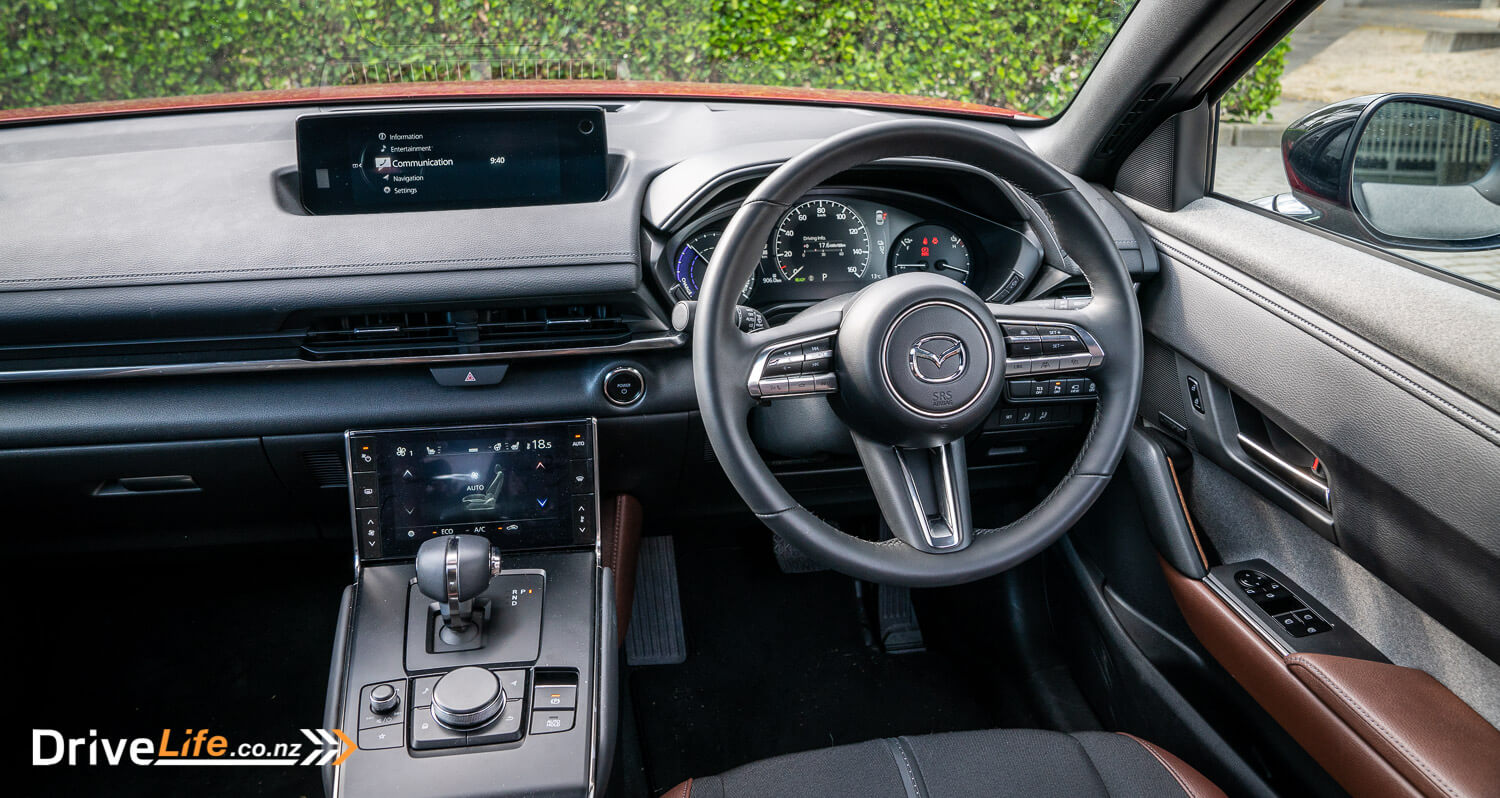
Overall, from the materials and trims alone, the MX-30 has a vastly more creative interior compared with most other small SUVs. With that said, the MX-30’s interior format is still very familiar.
There’s a few EV’s that are known for their novel designs. Some of which are good, and some not so good. These range from funky designs, or even going a bit rogue and reinventing things altogether (Tesla’s new steering wheel comes to mind).
The MX-30, by contrast, feels more analogue. Similar to most other vehicles our readers will own and be familiar with. Physical buttons, mechanical textures, and the glaring example is the presence of a conventional gear-selector. It’s all classic Mazda – functional, friendly-to-use and high-quality.
Of course, there’s been some additional digitisation of the climate controls. Why? Because for some reason, EV’s mean more screens, I suppose.
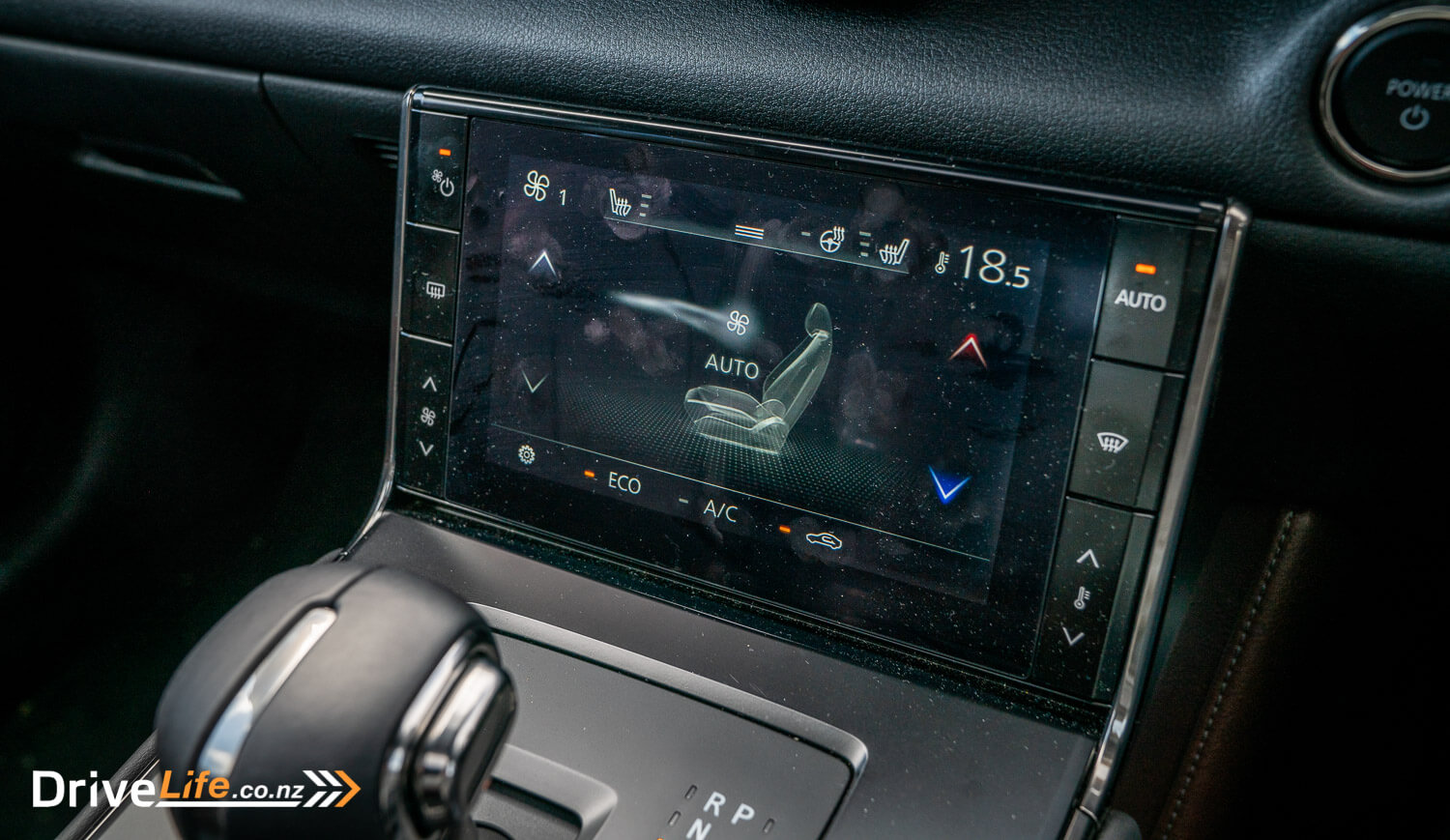
On the subject of technology, the MX-30 gets Mazda’s latest infotainment unit. The resolution is crisp, and the interface is simple and clean. The system is not a touch screen, but controlled via dial. The infotainment is hooked up to a 12-speaker Bose sound system, which will impress many, and also satisfy some of the more hard-nosed audiophiles.
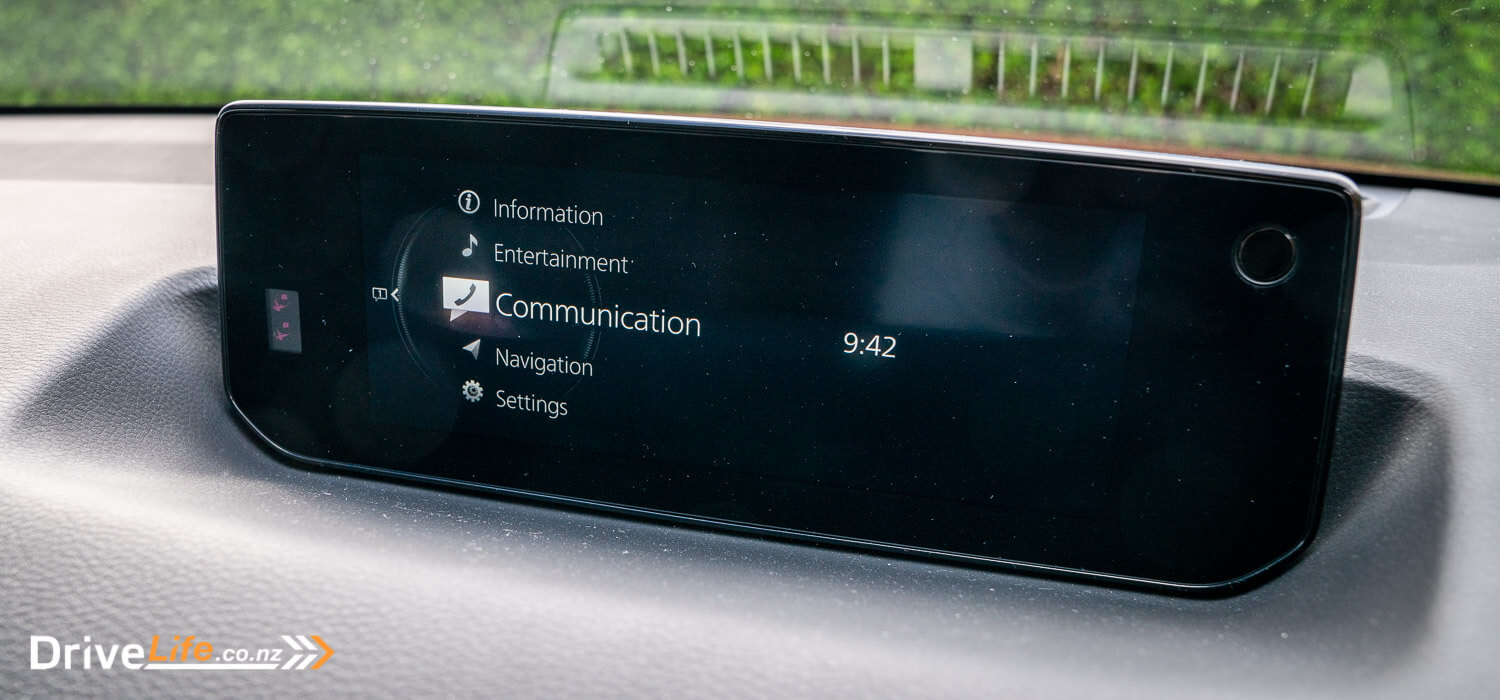
The front dash cluster is the same used in the Mazda3, which uses a combination of digital and fixed gauges. I rate this cluster, mainly for its clean design and ease of use.
The front seats are also excellent, being both comfortable and supportive. They’re also heated, and they get up to temperature before I can even leave my parking building in the evening.
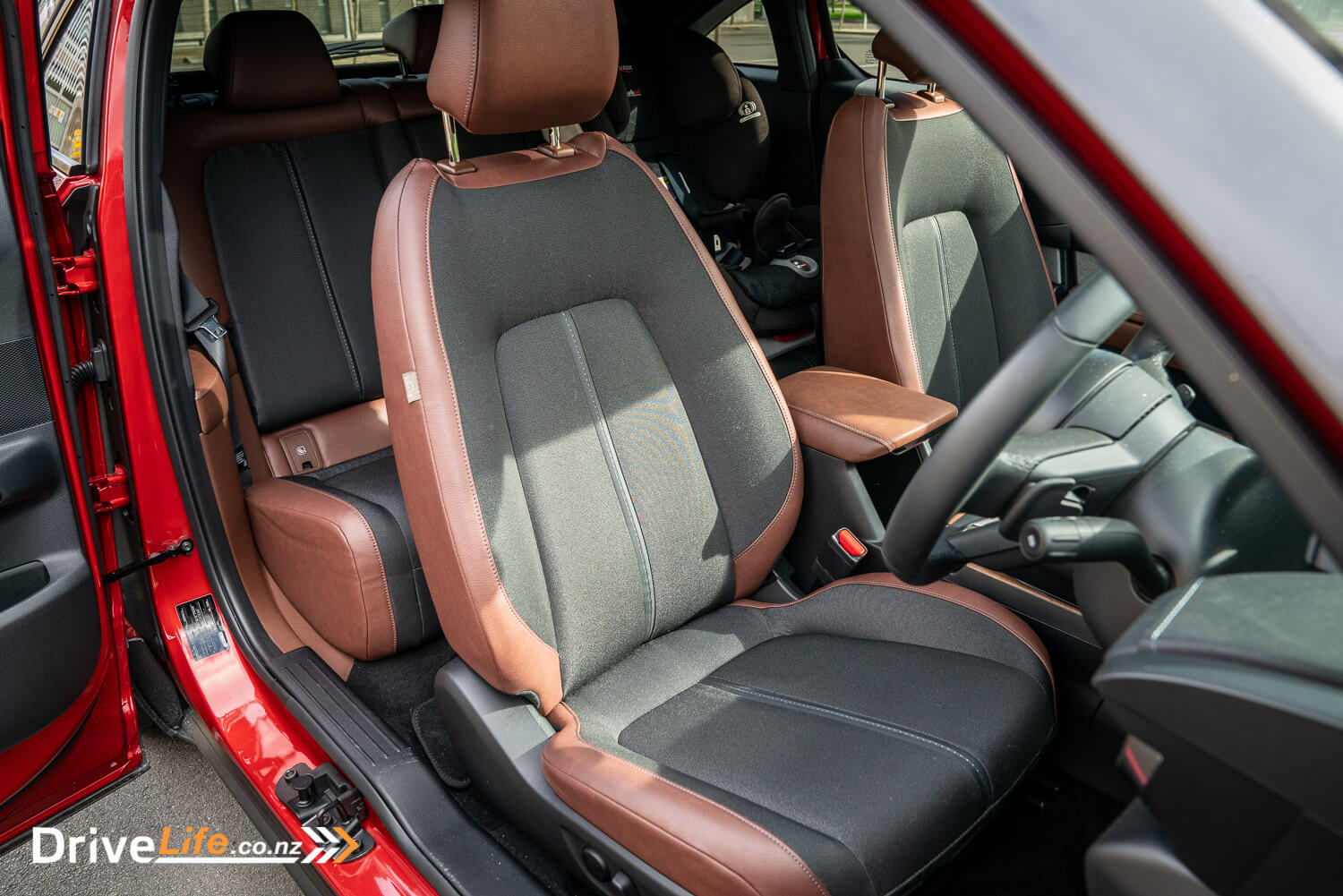
The downsides? There aren’t many, but for the few, they’re mostly in the rear quarters.
While those suicide doors are cool, they’re a bit of a faff in a tight car park. On the same point, the doors give an average adult enough space to climb in and out of the rear, but you’ll find yourself wanting a fraction more room. A quick fix would be if Mazda added an easy action for sliding the front seat forward, but this doesn’t feature.
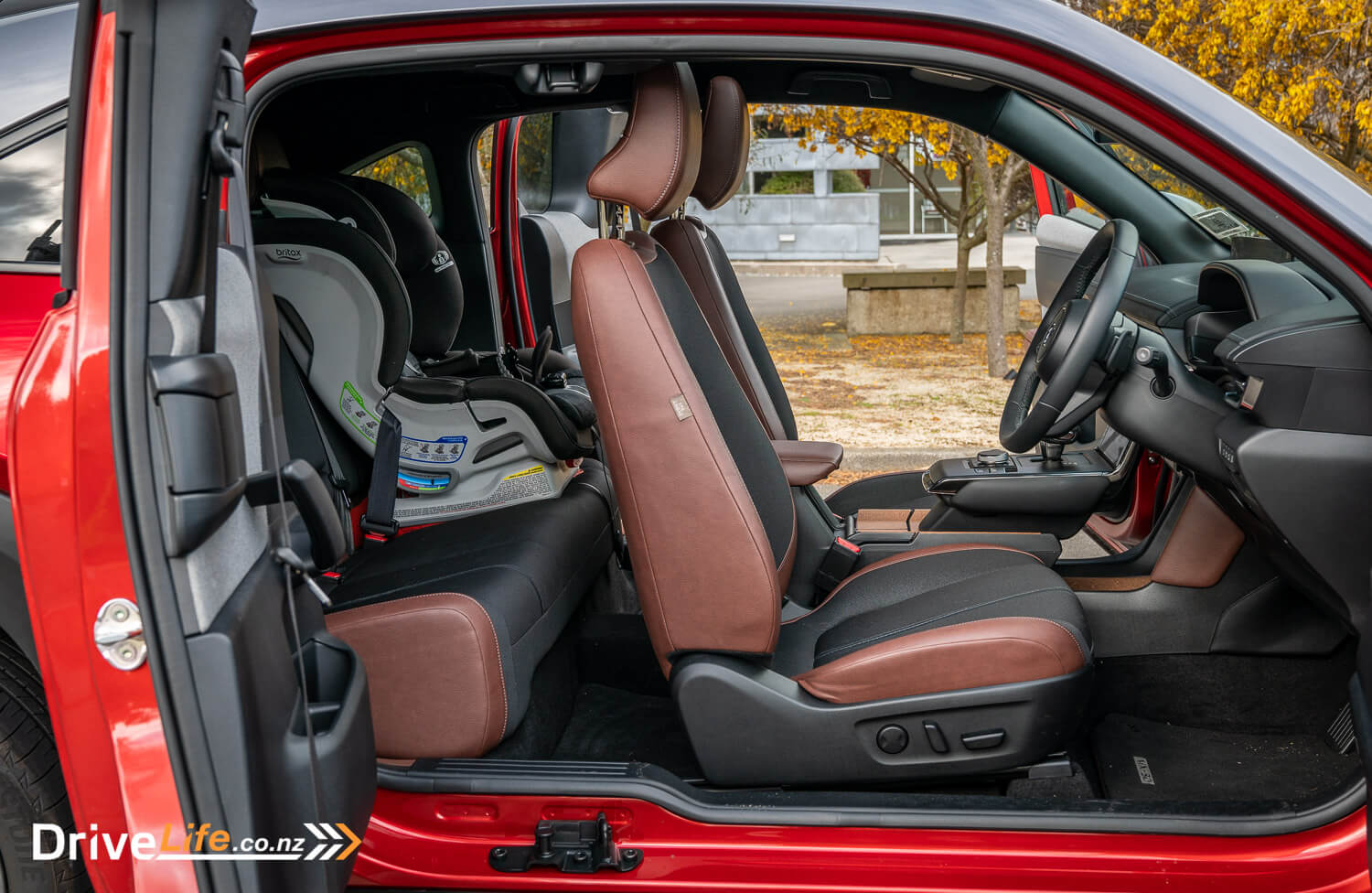
Finally, the B-pillar is rather chunky, creating an annoying blind spot.
These issues aside, the MX-30 has a genuinely unique interior. It’s a departure from Mazda’s usual design, but pushes the envelope in terms of the materials used, yet retains a conventional vehicle layout and is executed to Mazda’s usual high-quality.
What’s the 2021 Mazda MX-30 Like To Drive?
ALISTAIR’S POINT OF VIEW
Before we can really dive into the driving experience, we really need to address the pressing topic for the MX-30 – the range.
The MX-30 offers 199Km WLTP range, which by comparison with some competitors, isn’t generous. For example, the MG ZS EV, which is $48,999 before the government subsidy, offers up 263Kms of range. The standard Tesla Model 3 offers 448Kms of range, for $66,900 before the subsidy.
Virtually all electric cars are benchmarked by their range figures, and sadly for the MX-30, a few EV evangelists will write-off it off before even opening the driver’s door.
It’s interesting to think about, because the issue of range is very much a ‘today’ problem. If chargers were abundant, and if EV’s could be charged quickly, the matter of range becomes less of a concern.
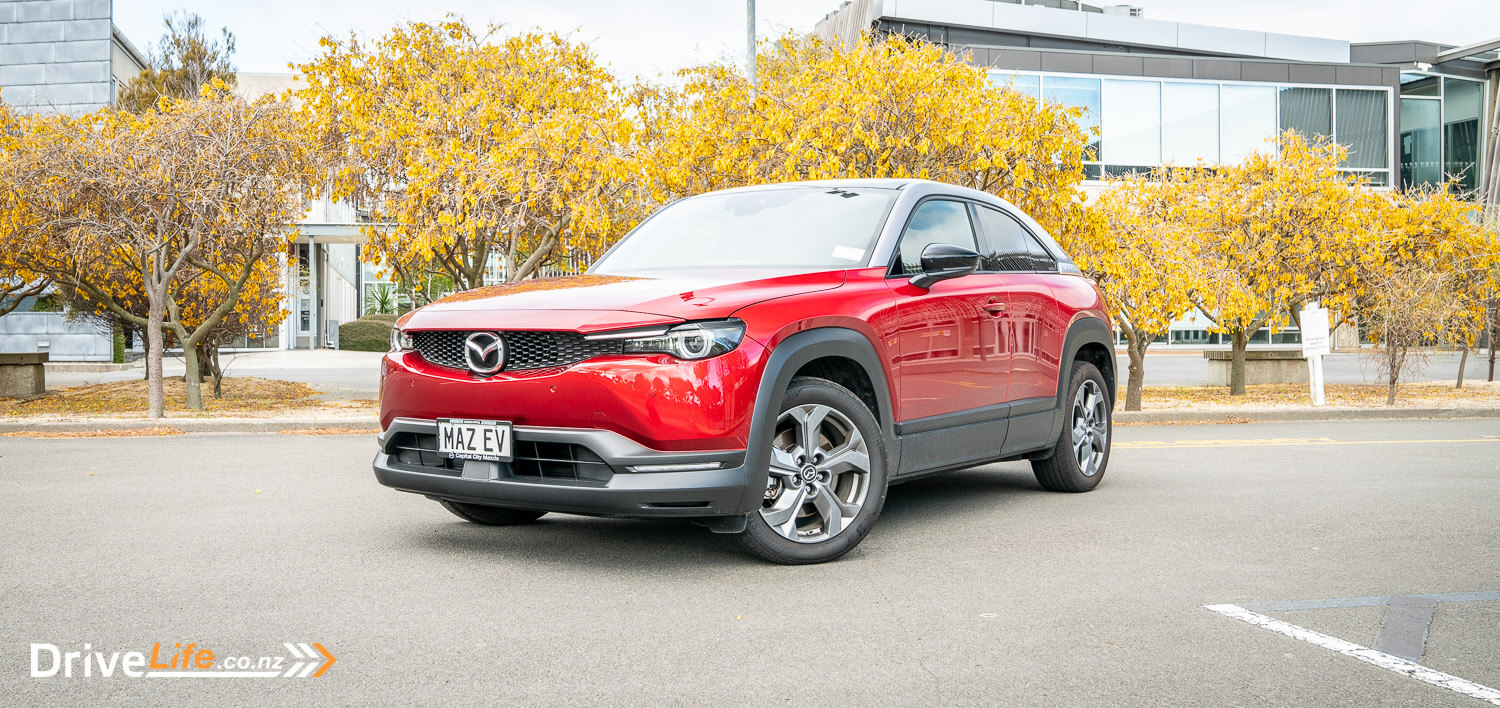
So why didn’t Mazda give the MX-30 more range in the meanwhile?
Mazda’s answer concerns the emissions from producing a battery. Manufacturing large Lithium-Ion batteries produces a significant amount of emissions, more than the manufacture of an ICE-powered vehicle. The larger the battery, the longer it takes to achieve a net-reduction on emissions compared with the ICE vehicle over its lifetime. Essentially, a smaller battery means a shorter ‘break-even’ point on emissions, in terms of distance travelled. To understand this better, check out our launch article.
This makes plenty of sense, but I also suspect it’s partially because of a design constraint. The MX-30 is based on an existing Mazda platform (Mazda3), and not a new EV dedicated platform. Because of this, it’s likely more difficult to pack more batteries into the package.
For whichever reason, the main question is can you actually live with only 200kms of range?
Surprisingly, the answer is yes!
I was initially sceptical of the range too. My commute is 26kms one-way, or 52kms both ways. Even at an 80% charge, which gives the MX-30 around 140kms; that was still two days of commuting with enough juice for additional errands.
The average New Zealander commutes 26kms daily in total, so my circumstances are a tad more extreme than most. Yet, it does prove the point that the MX-30 does offer enough range for many. Also, most EV owners will have a home-charger box installed at home (which Mazda gives you for free with MX-30’s sold new), and habitually, the car will go on charge every-night once home.
But I can tell you aren’t convinced. You want the reassurance of more range, which is understandable, even though the MX-30 genuinely offers more than what most people need.
It means that the MX-30 appeals more as a niche product than a main market vehicle. For those that do commit, they’ll get to enjoy the many qualities that make the MX-30 generally a nice vehicle to live with.
True to Mazda form, all MX-30’s driving dynamics are totally sorted. The ride quality is good, and road-noise is well managed. Mazda’s G-vectoring control also features on the MX-30, which aids with corner turn-in and stability. The MX-30 also felt nimble and light-on-its-feet relative to some other EVs, probably in-part, due to the smaller batteries.
There are 5 modes of regenerative braking, which are calibrated just right in my opinion. The paddles changing the modes are quick and snappy, unlike the MG which takes seemingly forever by comparison.
The MX-30 also produces a faint acceleration noise, which I actually appreciated. It means the sensory aspect of noise isn’t completely lost when driving the vehicle.

Around town, the driving position is more elevated than your average hatch meaning there’s better visibility. The small SUV dimensions along with all its cameras meant it was easy to park, which I appreciated in my frequented downtown parking building, which has tight carparks and concrete overhangs which occasionally claim a windshield from time-to-time (Gilmer Terrace – in case you were wondering).
Another impressive aspect for me was that the lane-assist tech actually worked reliably, which has been a gripe of mine in Mazda’s other vehicles.
Overall, between the styling, the unique interior and the driving dynamics, the MX-30 betters many competitors with its liveability and drivability. I genuinely enjoyed my time with the MX-30, and those that can operate within the range constraint will enjoy it too.
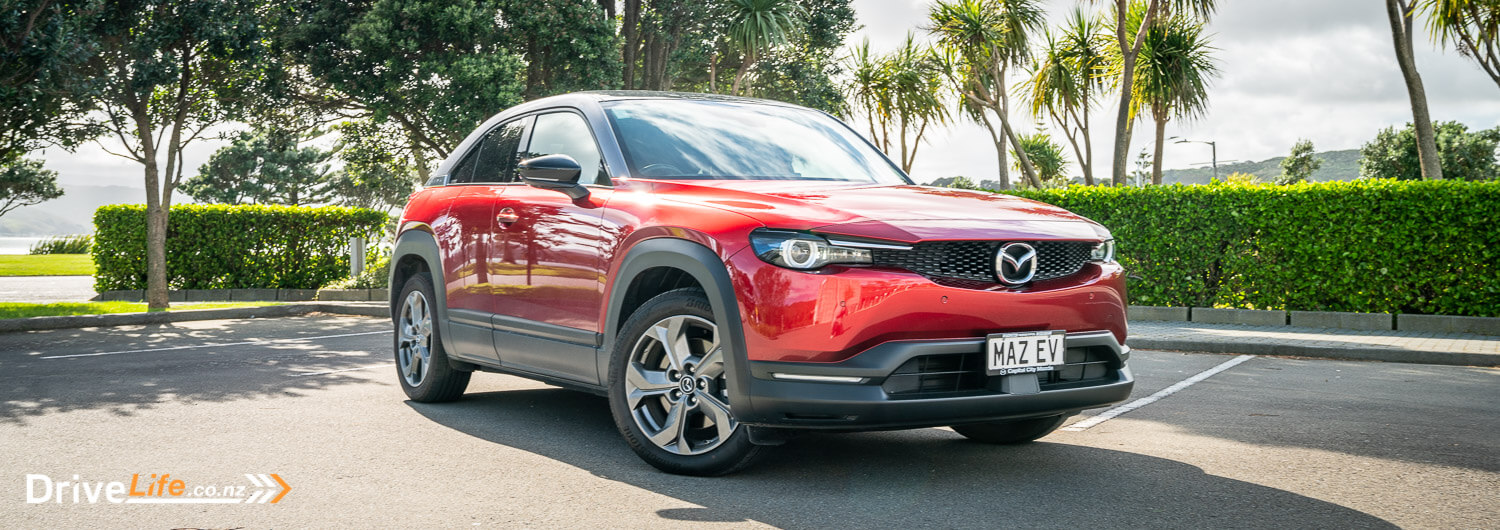
FRED’S POINT OF VIEW
I thoroughly enjoyed my drive in the MX-30 during the launch, and I enjoyed my time with it again after lockdown. For me, the best thing about the MX-30 is that it drives like a Mazda; that’s to say it’s refined, smooth, handles well, and drives well – in fact, all the things I said about our long-term CX-30 are the same for the MX-30. The driving experience and dynamics are what comes through when driving any Mazda and while it might be electric, it’s the same qualities for the MX-30.
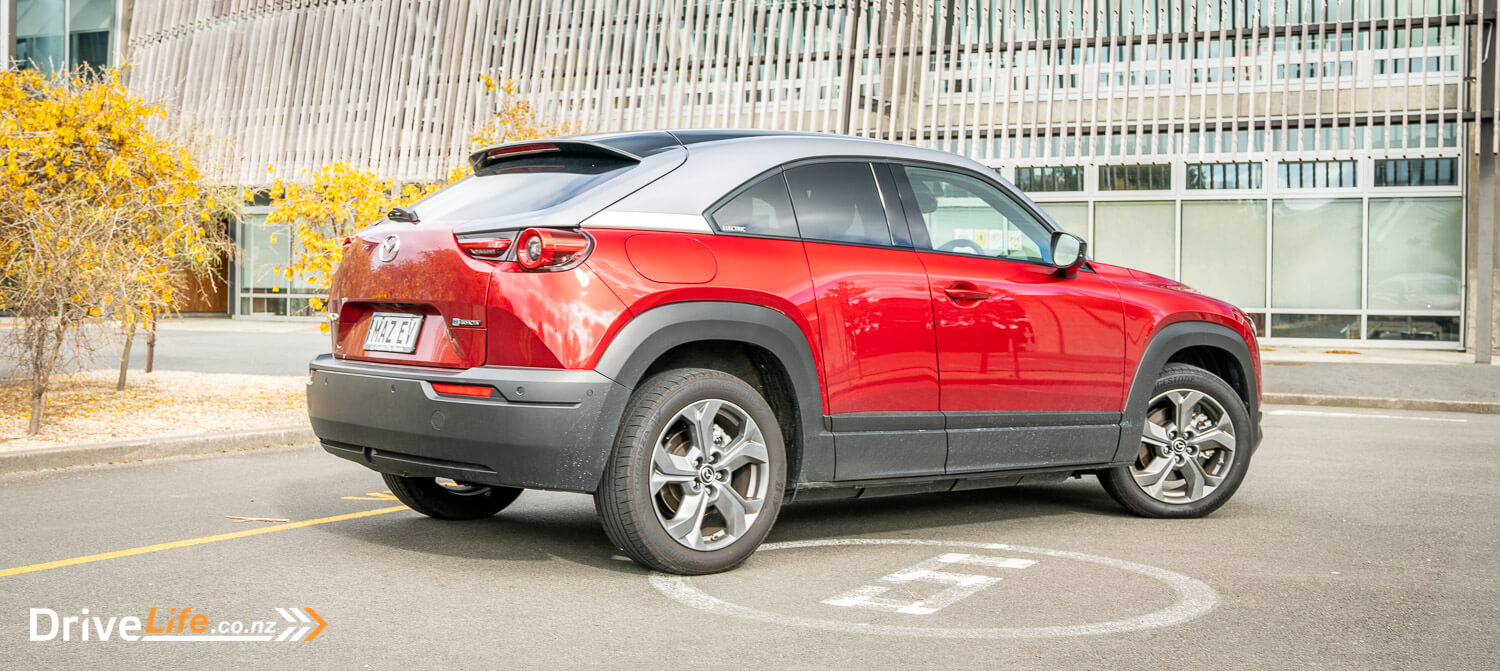
It’s incredibly quiet on the road, and not just because it’s an EV. Mazda have obviously spent a lot of time putting sound deadening in just the right places. There’s very little wind, tyre or road noise that makes it into the cabin.
There are some things that I found weren’t great, after spending more than a few hours in the car. The blind spot on the driver’s side is pretty major, the interior can feel somewhat claustrophobic until you open the sunroof blind, and the range does seem low. I saw around 177Km on a full charge each day. I completely understand Mazda’s view on the battery capacity being all about reduced carbon emissions due to the battery’s size, but I do wonder if people are going to go to a cheaper EV that has more range.
In saying that, I didn’t care about the range. 177Km was plenty for my daily commute, and I often took the car down to 20Km remaining range, knowing full well I’d still easily get home, so why worry? I also love how Mazda hasn’t given the car any Eco button or drive modes you can change; just get in and drive the thing. Nice. The regen paddles work really well for me, giving me 5 levels of regen including two for coasting. I often found myself slowing the car down with the paddles to get that extra bit of free charge going.
I do love the cork on the interior – something completely different and yet better than still more plastic. Ditto the felt on the doors – it looks great, feels great and I’d have it any day over yet more black plastic.
Those MX-30 naysayers out there need to drive this car. It’s far more refined than many other EVs for sale at the moment.
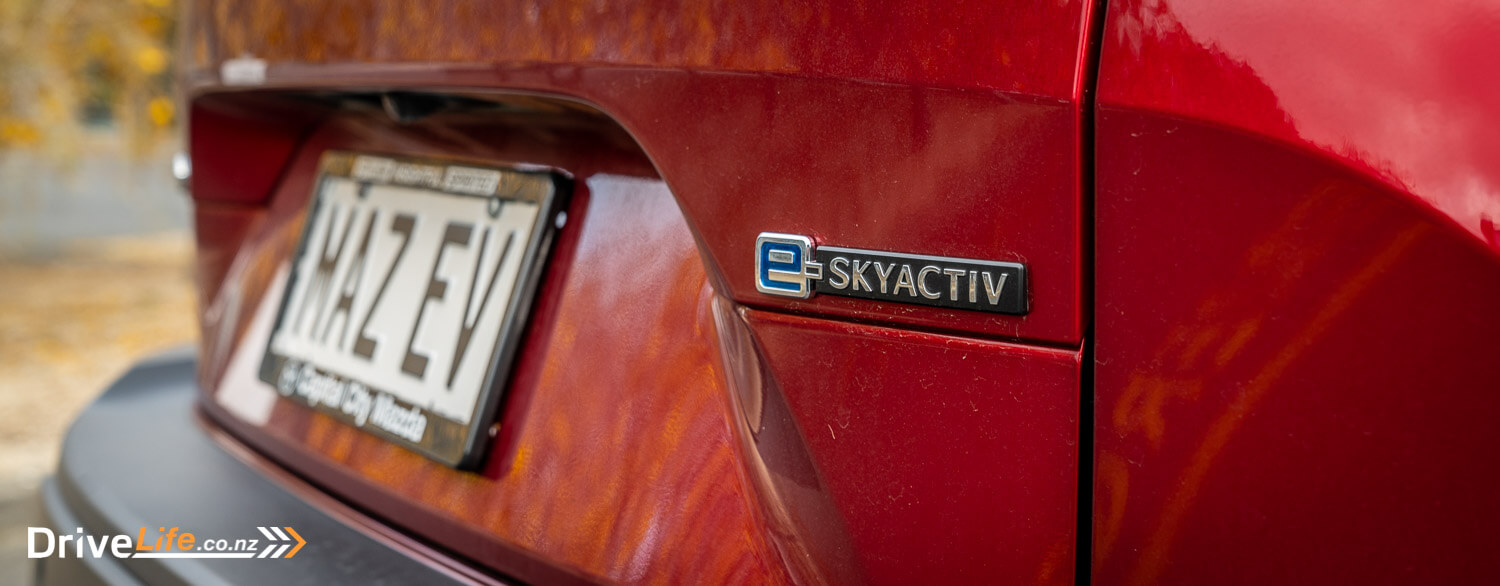
JOHN’S POINT OF VIEW
After the launch event for the MX-30, I was keen to spend more time behind the wheel of this new electric vehicle. So it was great that Mazda had offered us a long term review so that the entire team could all bring their perspectives to this new car.
The MX-30 is clearly not trying to be a big SUV, Mazda has a wide range of products available for those requirements. The MX-30 is a small family or young family EV SUV. This of course depends on the shape of the parents in the front, due to my height this made the legroom in the back rather tight. It’s the perfect car for a couple, old or young but I think people might find it a bit of a struggle to make it a full-on family car. Older kids or adults might find it a bit dark in the back too, as the B pillars are very thick due to the door configuration. This does affect visibility, something to check if youre testing one, and it also leaves small windows for light.
The boot is OK, but again it’s not huge, good for a buggy and some bits and pieces for day to day life. I feel it may be a struggle to push the MX-30 for any sort of trip away, as you may also need to bring your EV charge cable too, if there is no charging station available to you.
I think the comments seen across the market about the range are just uneducated opinions because when you have an EV, you alter the way you use it just like you alter your way of using a car over a bicycle, you don’t expect the bicycle to have the same range as a car, do you?
I still really like the MX-30 as I found it very easy to live with, even during some of my extended battery tests, where it got down to 2% left. The price point may need to be looked at, as there is some competition that could win you over for the sake of a couple of thousand dollars.
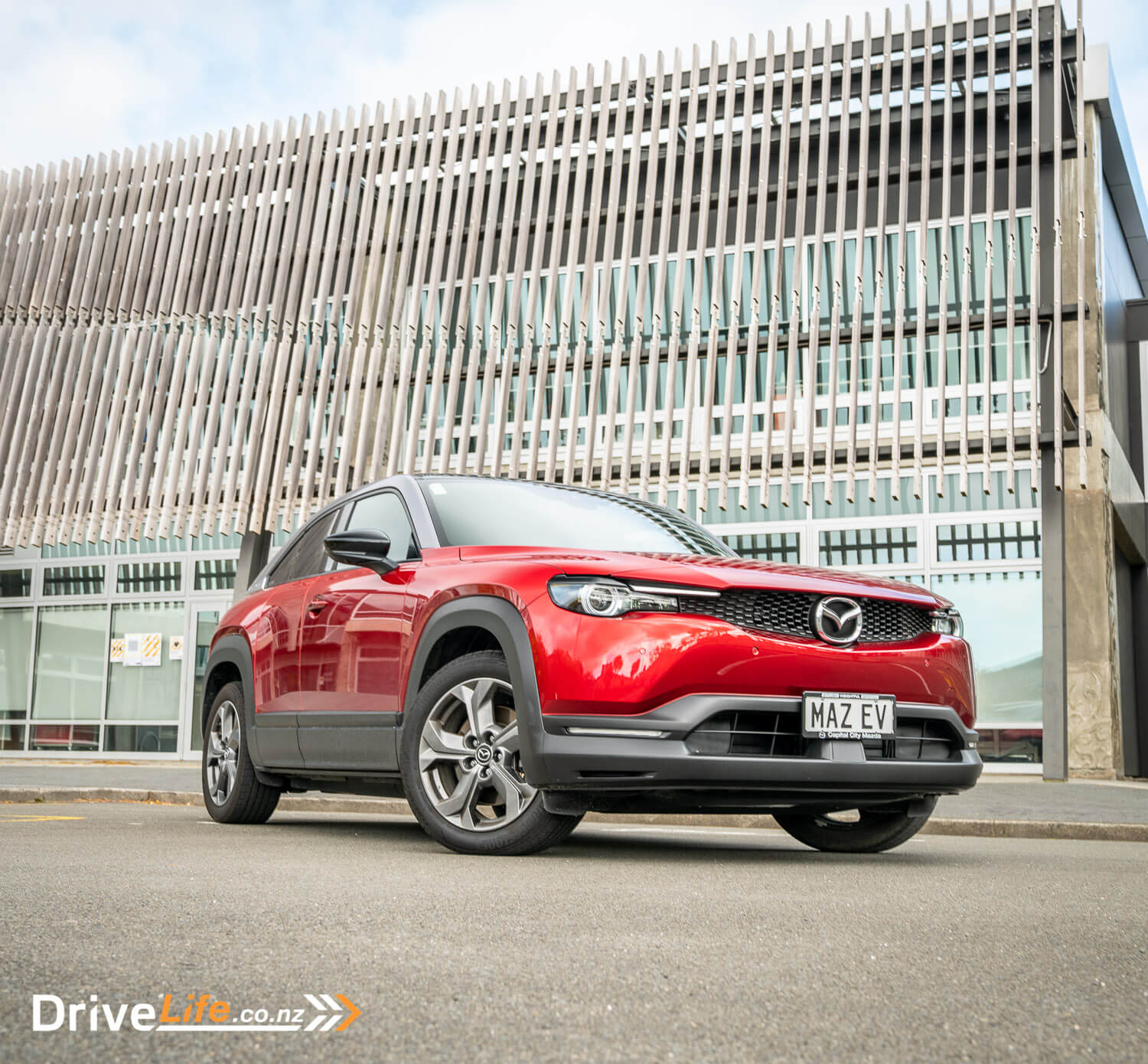
ROB’S POINT OF VIEW
On paper, the MX-30 looks roughly equivalent to the MG ZS EV – similar battery, range and features. But there’s a big difference in price. Have Mazda lost the plot here? Should you just buy the MG?
Well….no there’s a lot more to it than that. The Mazda beats the MG hands-down in almost all areas. It might be Mazda’s first EV but this is a mature product. Everything inside and outside the car has a quality look and feel. Everything feels solid and well-made. All of the electronics and entertainment systems work smoothly and well. It’s supremely quiet and comfortable. It drives beautifully, handles better than other EVs, and looks great too.
It’s not perfect, the lifestyle rear doors look cool and are well-engineered, but I found them impractical in tight car parks, and it’s not a simple process for a rear-seat passenger to get themselves out of the car. Over-the-shoulder visibility is compromised because of the chunky B- and C-pillars. They also make the rear seats feel very dark and enclosed. My 11-year old said it felt like being in a box.
If I was looking to buy a city driving and commuter car, having driven this and the MG, I would be looking for the extra money to buy the Mazda. For the same reason you might buy a Mercedes over a Corolla. It does the same job but it’s the difference between functional and basic, and comfortable and luxurious.
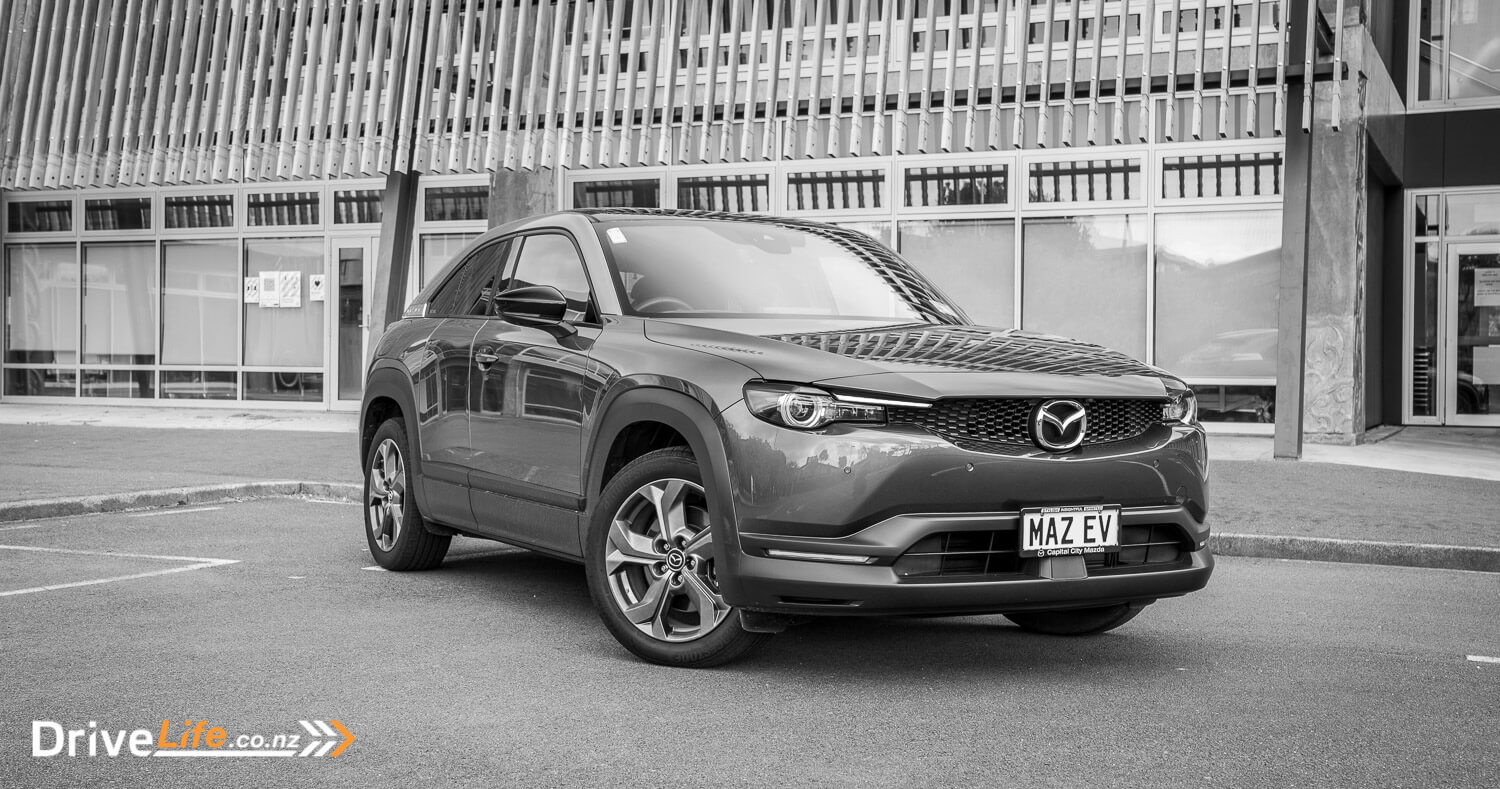
2021 Mazda MX-30 – Specifications
| Vehicle Type | Compact SUV |
| Starting Price | $74,990 |
| Price as Tested | $66,365** Price includes the clean-car rebate of $8,625. Tested price otherwise is $74,990 |
| Engine | Water-cooled synchronous AC motor (E-Skyactiv) |
| Power, Torque kW/Nm | 107/271 |
| Battery Type | 35.5kWh Lithium-ion |
| Spare Wheel | N/A |
| Kerb Weight, Kg | 1,670 |
| Length x Width x Height, mm | 4395 x 1795 x 1555 |
| Cargo Capacity, litres | 341 777 with rear seats down Includes underfloor storage space |
| Range | 224 kms claimed |
| Charge time (claimed) | DC Charging @ 50kWh – 40mins AC Charging @ 6.6kWh – 5 hours AC Charging @ 2.4kWh – 16 hours |
| Economy, kWh/100km | Advertised Spec – Combined – 18.5 Real World Test – Combined – 17.6 |
| Towing Capacity Kg, unbraked/braked | N/A |
| Turning circle, metres | 10.6 Small: 6-10m / Medium 10-12m / Large 12m+ |
| Warranty | 5 year unlimited km warranty 5 year or 100,000km servicing 8 year/160,000km battery warranty |
| ANCAP Safety Ratings | Rightcar.govt.nz: 5 Star |
